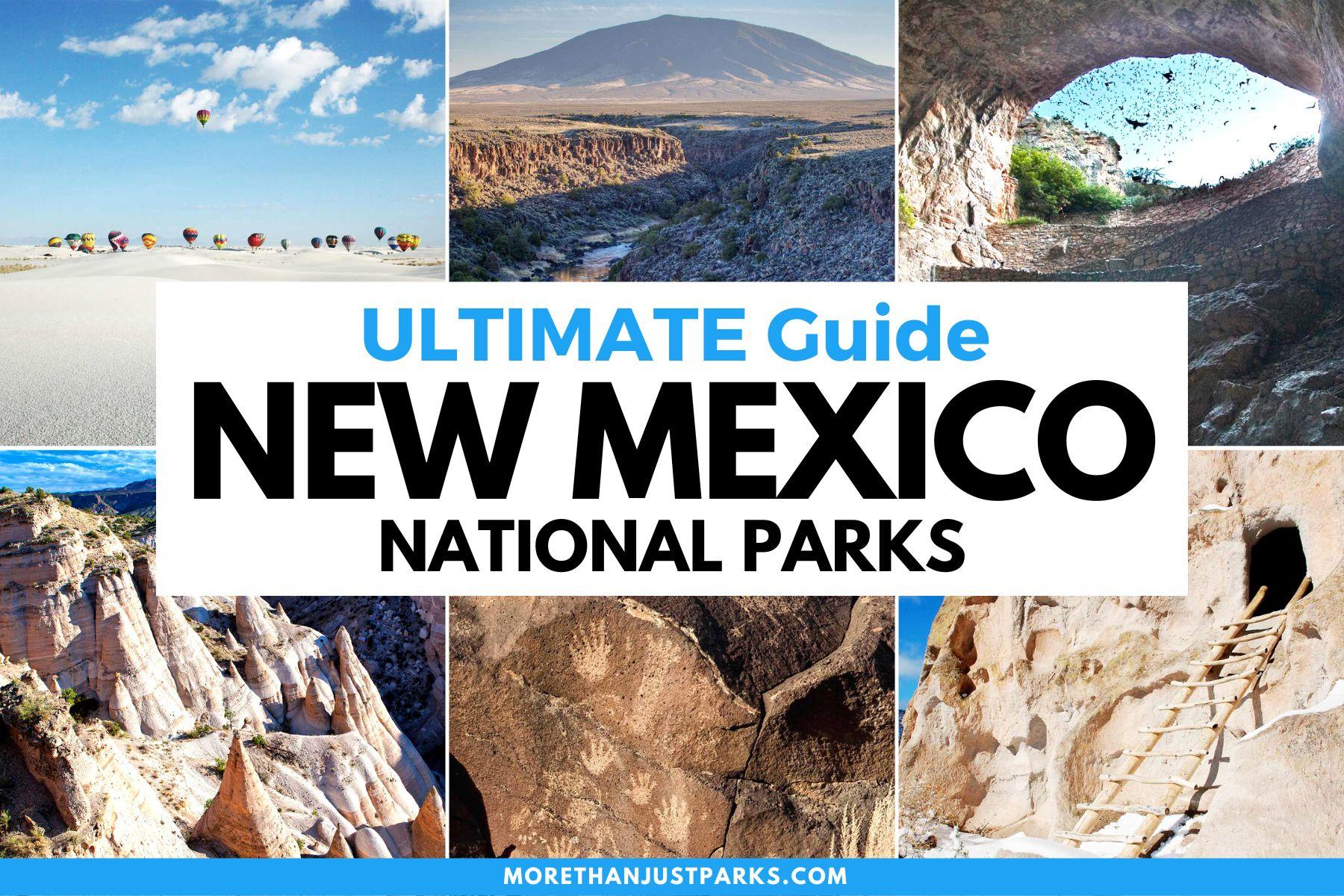
Article Summary: New Mexico National Parks
New Mexico National Parks! In this article, we feature all of the incredible park sites in the great state of New Mexico.
We’ve got 20 national park sites for you to see on your next visit to the Land of Enchantment.
These New Mexico National Parks include amazing historic sites, incredible monuments, beautiful parks, legendary trails, and so much more.
I’ve been to so many of these amazing places since retiring from teaching in 2018. Did I mention that I taught history? I spent a lifetime teaching about the history behind these momentous sites. Then I got to see them firsthand. And now I’m sharing the stories of these incredible places with you. It doesn’t get any better than that!
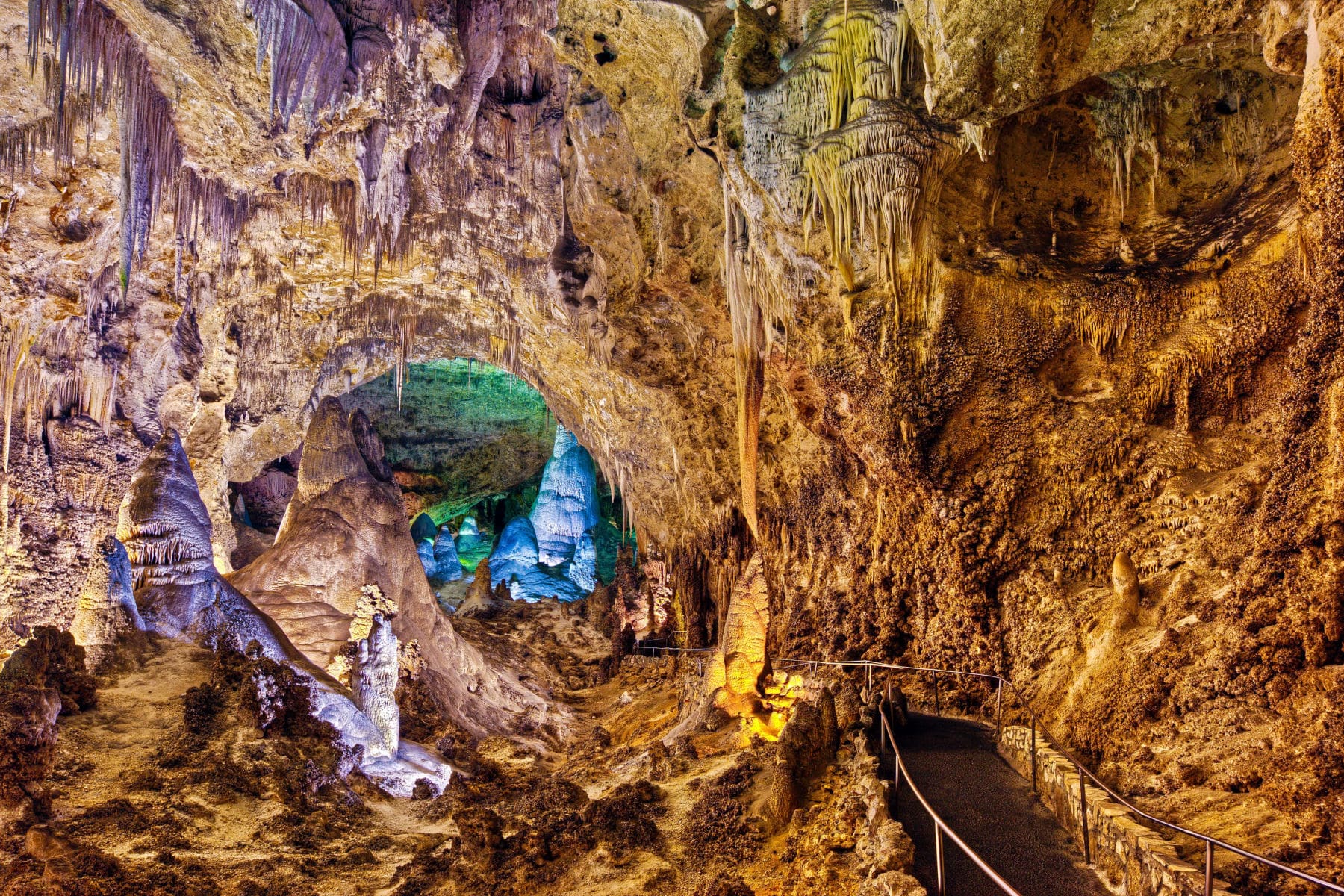
So, What Is A National Park?
We get asked that question a lot because there’s a difference between a “national park” and a “national park site.” To help you understand that difference you might want to check out our article titled: What Is A National Park Really?
If you’re planning a trip to the Land of Enchantment then one book that I highly recommend is: New Mexico Bucket List Adventure Guide & Journal: Explore The Natural Wonders & Log Your Experience!
We’ll give you 20 wonderful reasons why you’ll want to make New Mexico your next vacation destination.
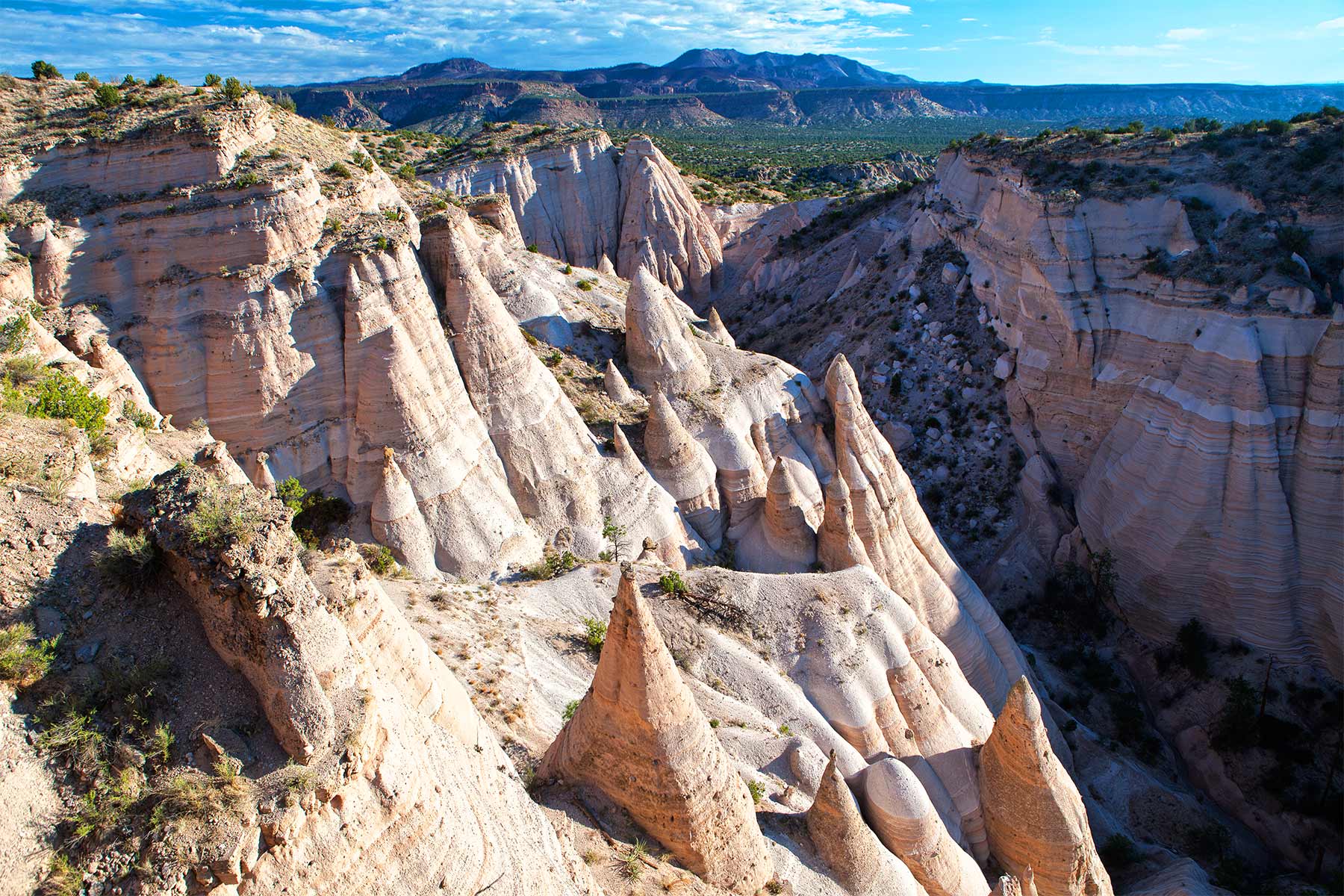
Table Of Contents: New Mexico National Parks
New Mexico National Parks
New Mexico National Parks (Alphabetical)
1. Aztec Ruins National Monument
I taught World History for almost 30 years. One of my favorite topics of study was the civilizations of pre-Columbian America.
Foremost among these civilizations were the Aztecs, who probably originated as a nomadic tribe in northern Mexico, around the beginning of the 13th century.
From their magnificent capital city, Tenochtitlan, the Aztecs emerged as the dominant force in central Mexico, developing an intricate social, political, religious and commercial organization bringing together many of the region’s city-states under their control by the 15th century.
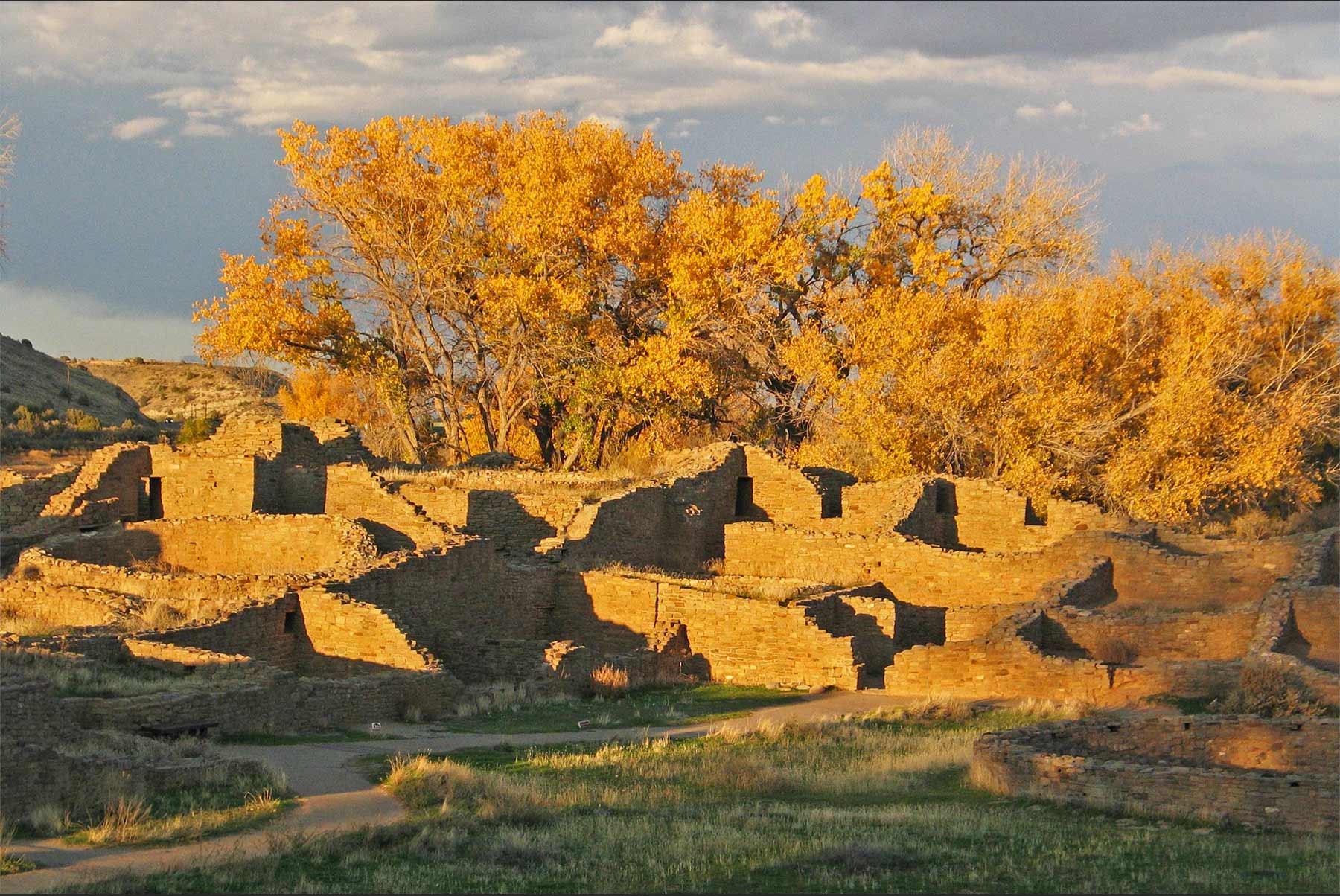
Things To Do At The Aztec Ruins
At the Aztec Ruins National Monument you can follow ancient passageways to a distant time. Explore West Ruin, a center of ancestral Pueblo society that once housed over 500 masonry rooms.
Look up and see original timbers holding up the roof. Search for the fingerprints of ancient workers in the stucco walls.
Listen for an echo of ritual drums in the reconstructed “Great Kiva.” Adventure into the past.
There’s definitely no shortage of exciting things to see and do. I recommend beginning your adventure at the home of pioneering archeologist Earl Morris.
Today Earl’s home serves as the visitor center. There you can receive an orientation to the archeological site and pick up a trail guide too.
You can also see a fascinating 15 minute film titled, Aztec Ruins: Footprints of the Past. In it you’ll hear different historical perspectives including the Pueblo people, Navajo tribal members, and archeologists.
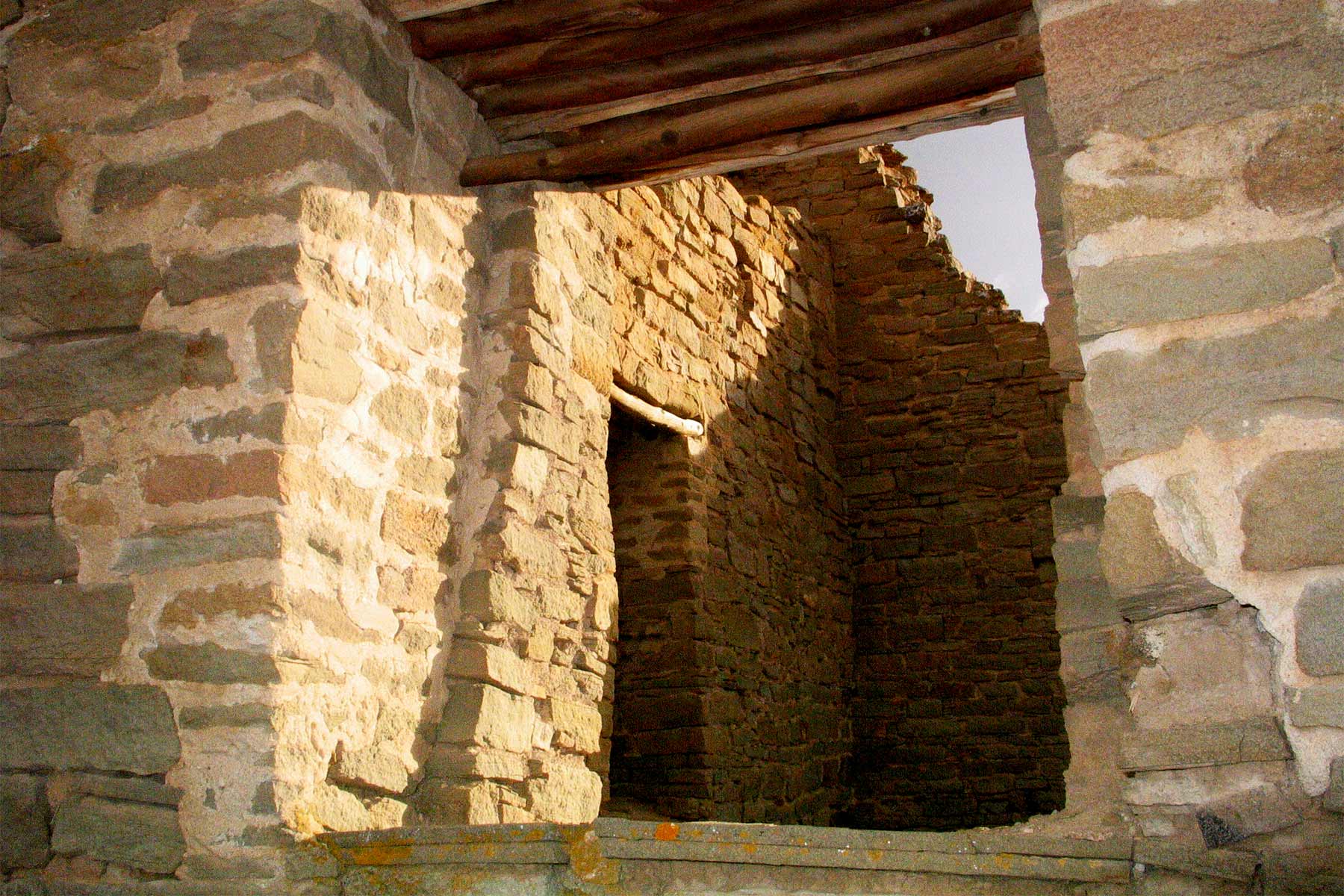
Check Out The Pueblo Great House
From the visitor center you can take a self-guided half-mile walk that winds through the ancestral Pueblo “Great House.”
There you can explore the original rooms. The Pueblo “Great House” was the social, economic, and political center of the region after Chaco.
Visitors can also stroll through the The Heritage Garden and the Native Plants Walk.
There you’ll see traditional native crops like corn, beans, squash, sunflowers, and gourds which are grown by park staff and volunteers.
You’ll also see the wild plants that people in the Southwest have relied on for thousands of years.
RELATED: These 24 EPIC Arizona National Parks Will Blow Your Mind
2. Bandelier National Monument
I enjoy travelling to the New Mexico National Parks as I always come home having learned something new. As a lifelong history buff, I particular enjoy learning about the Mesoamerican cultures which populated the area. A case in point is Bandelier National Monument.
The Ancestral Pueblo people lived in Bandelier from approximately 1150 CE to 1550 CE. They were able to build their homes from the volcanic tuff and plant their crops in the mesa top fields.
After over 400 years, however, the land here could no longer support its people.
A severe drought also meant that the life-sustaining crops could no longer be grown. By 1550, the Ancestral Pueblo people moved from this area to pueblos along the Rio Grande. (Source: NPS)
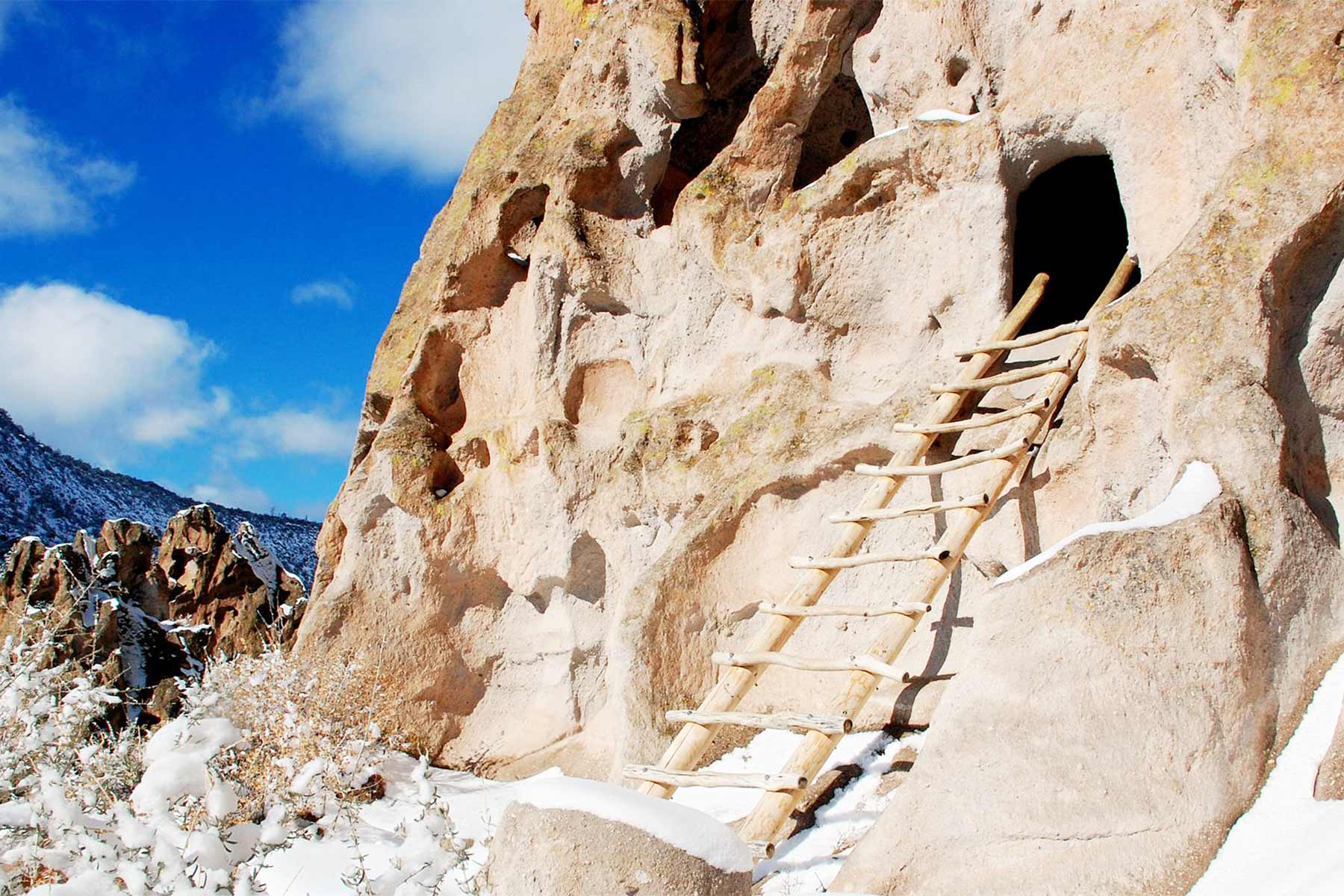
You Can Explore The Land Of The Ancient Pueblo People
At Bandelier National Monument you’ll find evidence of a human presence here going back over 11,000 years.
This includes petroglyphs, dwellings carved into the soft rock cliffs, and standing masonry walls. I recommend beginning your exploration of Bandelier with a walk on the Main Loop Trail.
It’s a short 1.4 mile loop trail that starts from the Visitor Center and leads through excavated archeological sites on the floor of Frijoles Canyon.
There are other fascinating trails including the 3 mile round-trip Falls Trail which goes to the gorgeous Upper Falls.
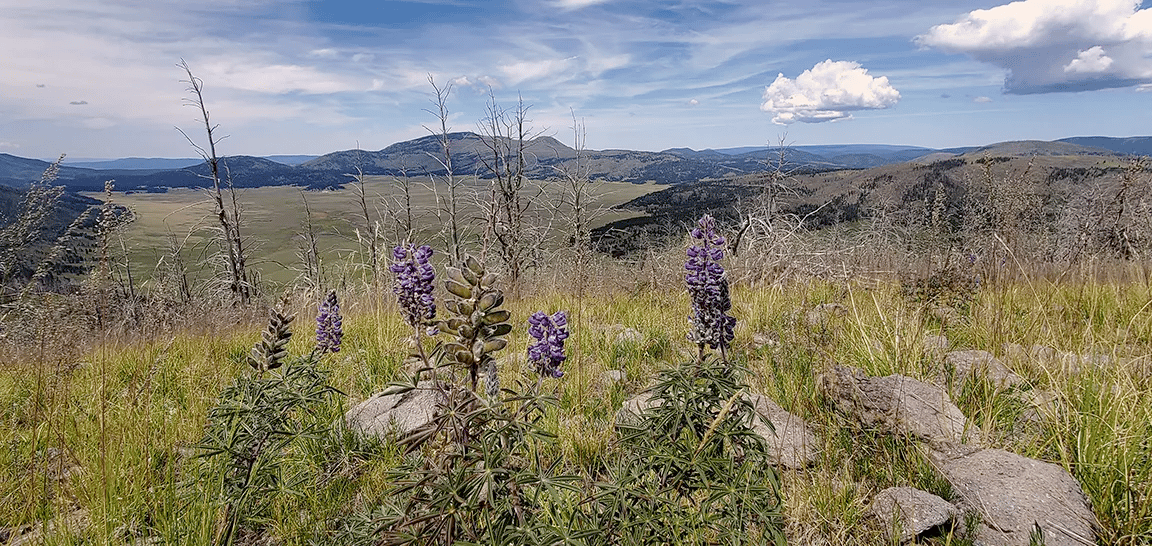
To learn more I recommend Bandelier National Monument: Home of the Ancestral Pueblo People .
3. Capulin Volcano National Monument
Everyone’s list of New Mexico National Parks to visit (or at least national park sites) has to include Capulin Volcano National Monument.
At Capulin Volcano National Monument, you’ll see a fascinating display of the volcanic geology of northeastern New Mexico.
I’ve been there and I can tell you that the views are spectacular. From the volcanic rim you will see parts of 4 different states.
This area also features one of the darkest night skies in the country.
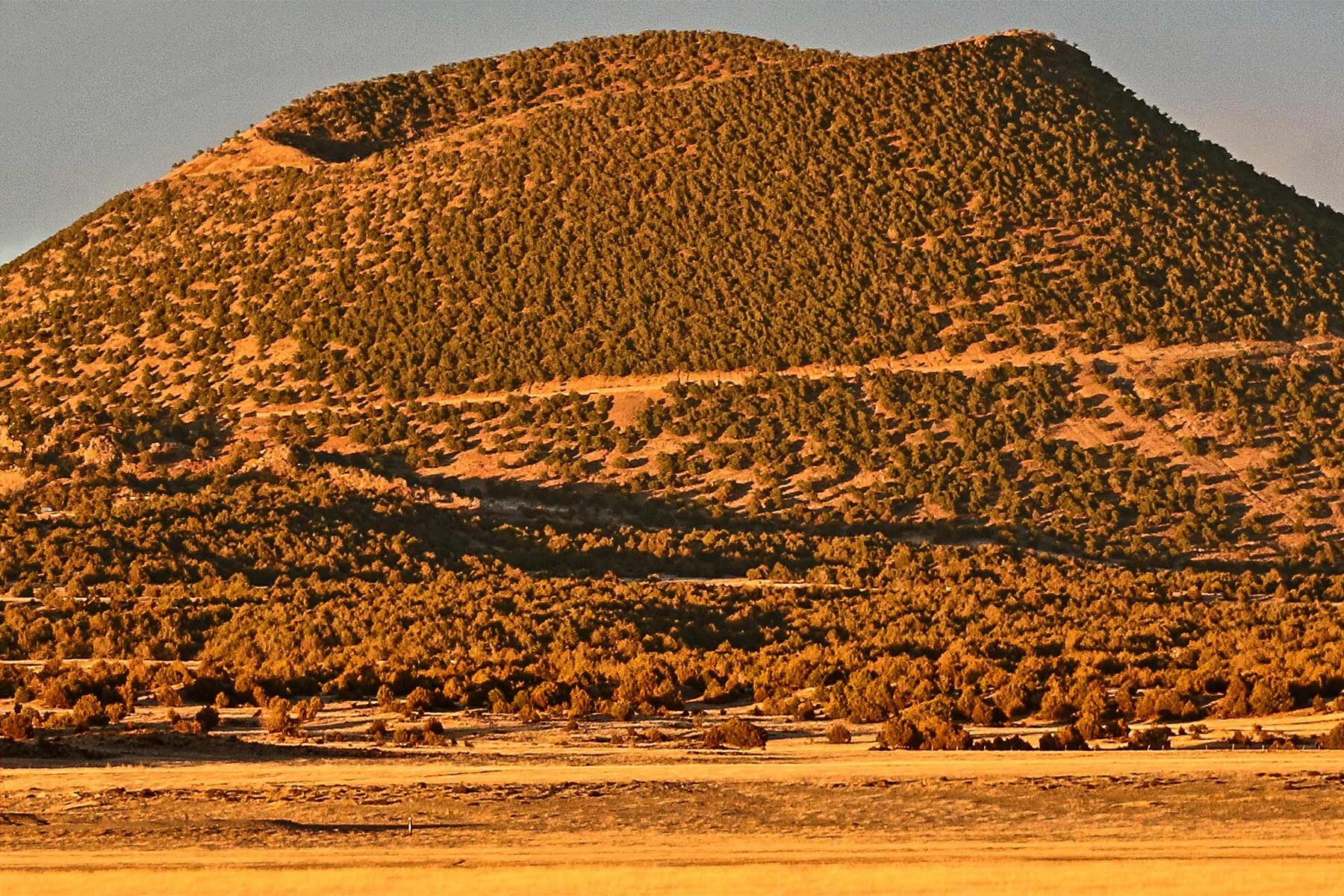
Things To Do At Capulin
Here are some of the things you can do at Capulin Volcano National Monument:
- Hike the Volcano: Capulin Volcano offers five different hiking trails, each with varying levels of difficulty. The Lava Flow Trail is the easiest, while the Crater Rim Trail is the most difficult and offers stunning views of the surrounding landscape.
- Drive the Volcano Rim Road: Visitors can drive around the rim of the volcano on a 2-mile paved road, with several overlooks and pullouts for viewing the surrounding scenery.
- Attend Ranger-led Programs: The park offers a variety of ranger-led programs, including guided hikes, educational talks, and special events.
- Visit the Visitor Center: The Visitor Center features exhibits on the history, geology, and wildlife of the park, as well as a gift shop.
- Picnic: There are several picnic areas located throughout the park, with picnic tables and grills available for use.
- Wildlife Viewing: The park is home to a variety of wildlife, including deer, elk, black bears, and more than 70 species of birds. Visitors can watch for wildlife from the rim of the volcano or on the hiking trails.
- Photography: The park offers stunning panoramic views of the surrounding landscape, including the Rocky Mountains, the Great Plains, and the volcanic fields of northeastern New Mexico, making it a great spot for photographers.

4. Carlsbad Caverns National Park
For many folks, Carlsbad is their favorite of the New Mexico National Parks. And, up until recently, it was also the only official congressionally designated New Mexico national park (more on that below).
The Spanish Conquistadors came is search of gold. Carlsbad Caverns hid a different treasure however.
In the twenty years before these caverns were set aside as a national park, at least 100,000 tons of bat guano were taken out of them and sold to growers of citrus fruit.
The treasure which these caverns held was an inexhaustible supply of agricultural fertilizer rich in nitrate and easily mined.
Guano is not the only treasure. These caverns provide those willing to explore them with an adventure into a different realm of natural beauty and wonder.
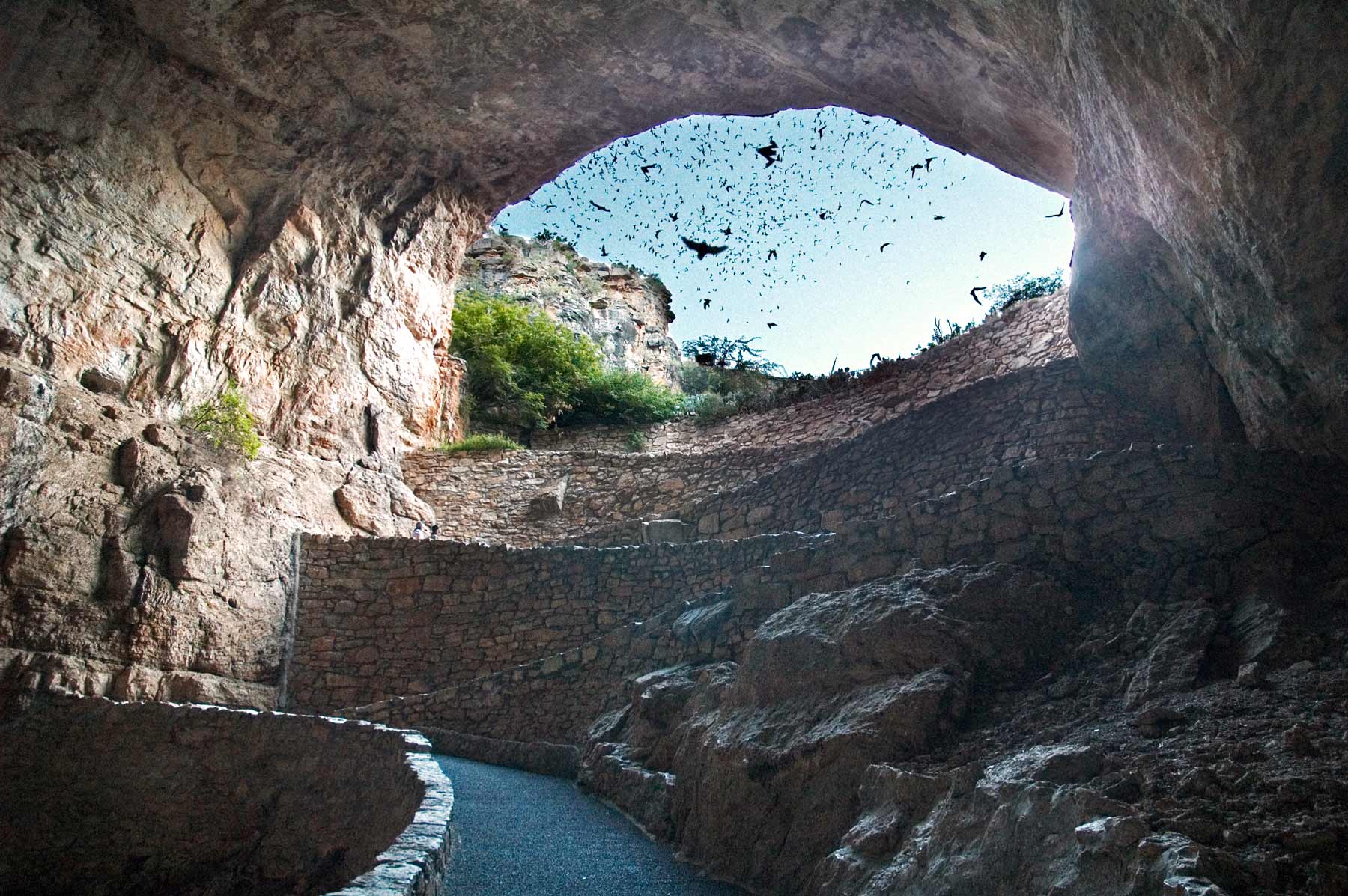
If you want to learn more about this amazing place then I recommend reading Carlsbad Caverns: The Story Behind the Scenery by Edward J. Greene.
Things To Do At Carlsbad Caverns
There are several activities to do in Carlsbad Caverns National Park, including:
- Cave tours: Take a ranger-led tour of the caves to learn about their history and geology.
- Self-guided tours: Explore the caves on your own, with the option of taking the Natural Entrance or Big Room tour.
- Bat flights: Watch as hundreds of thousands of bats emerge from the cave at sunset during the summer months.
- Hiking: Take a hike on one of the park’s trails for scenic views of the Chihuahuan Desert and surrounding area.
- Camping: Stay overnight in the park’s campground for an immersive experience in the desert environment.
- Wildlife viewing: Observe the diverse wildlife in the park, including roadrunners, rattlesnakes, and a variety of bird species.
- Stargazing: Take advantage of the park’s dark skies for stargazing and astronomy programs.
CHECK OUT: 10 AMAZING Facts About Carlsbad Caverns National Park
The Bat Flight Program
Each evening from late-May through October, you can experience a program about the Brazilian free-tailed bats that live in Carlsbad Cavern. And, best of all, you get to see them emerge from their cave.
This is a spectacle which you should NOT miss. The bat flight takes place around sundown in the summer. The bats pour out of the mouth of the caverns from a place know as the Bat Cave.
You’ll see these creatures emerge in a spiral stream through the entrance and over the rim towards the south.
To protect the bats, electronic devices are not allowed at the Bat Flight Program and surrounding area.
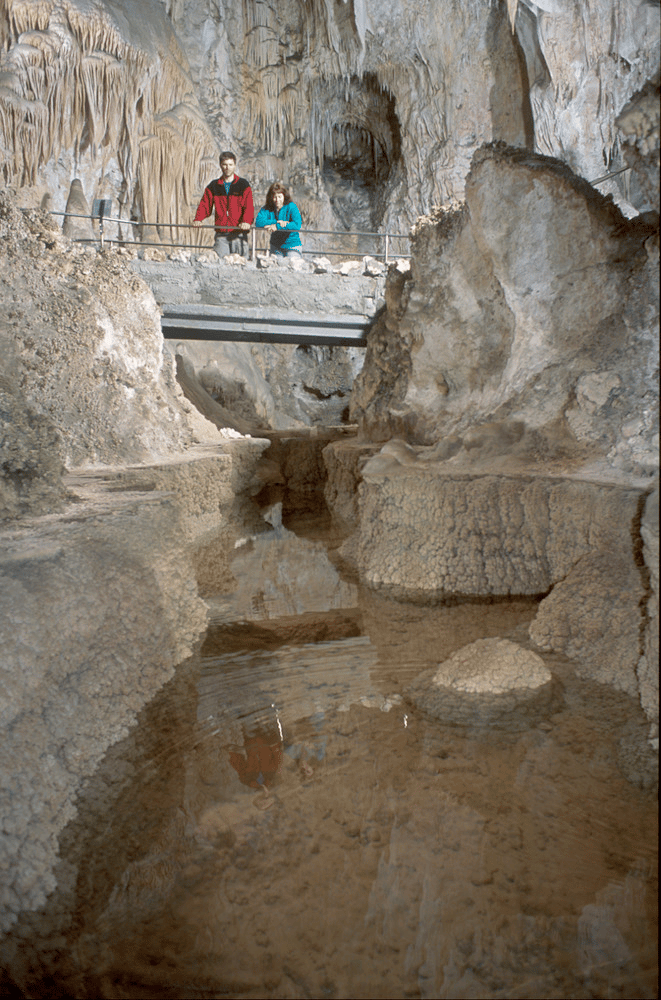
RELATED: 10 AMAZING Facts About Carlsbad Caverns National Park
5. Chaco Culture National Historical Park
Chaco Culture National Historical Park is located in northwestern New Mexico and is a UNESCO World Heritage Site.
It was the center of the Chacoan culture, a pre-Columbian civilization that thrived between the 9th and 12th centuries. The Chacoans constructed massive stone buildings and complex road systems, and they played a significant role in the cultural and economic development of the greater Southwest region.
The Chaco Culture was first identified in the late 19th century, and the park was established in 1907 as Chaco Canyon National Monument. In 1980, it was expanded and renamed Chaco Culture National Historical Park.
Archaeological excavations at the park have revealed a wealth of information about the Chacoan people and their way of life.
Despite the harsh desert climate, the Chacoans built a complex and sophisticated society, and their influence can still be felt in the Southwest today. The park serves as a testament to the cultural and architectural achievements of this ancient civilization.
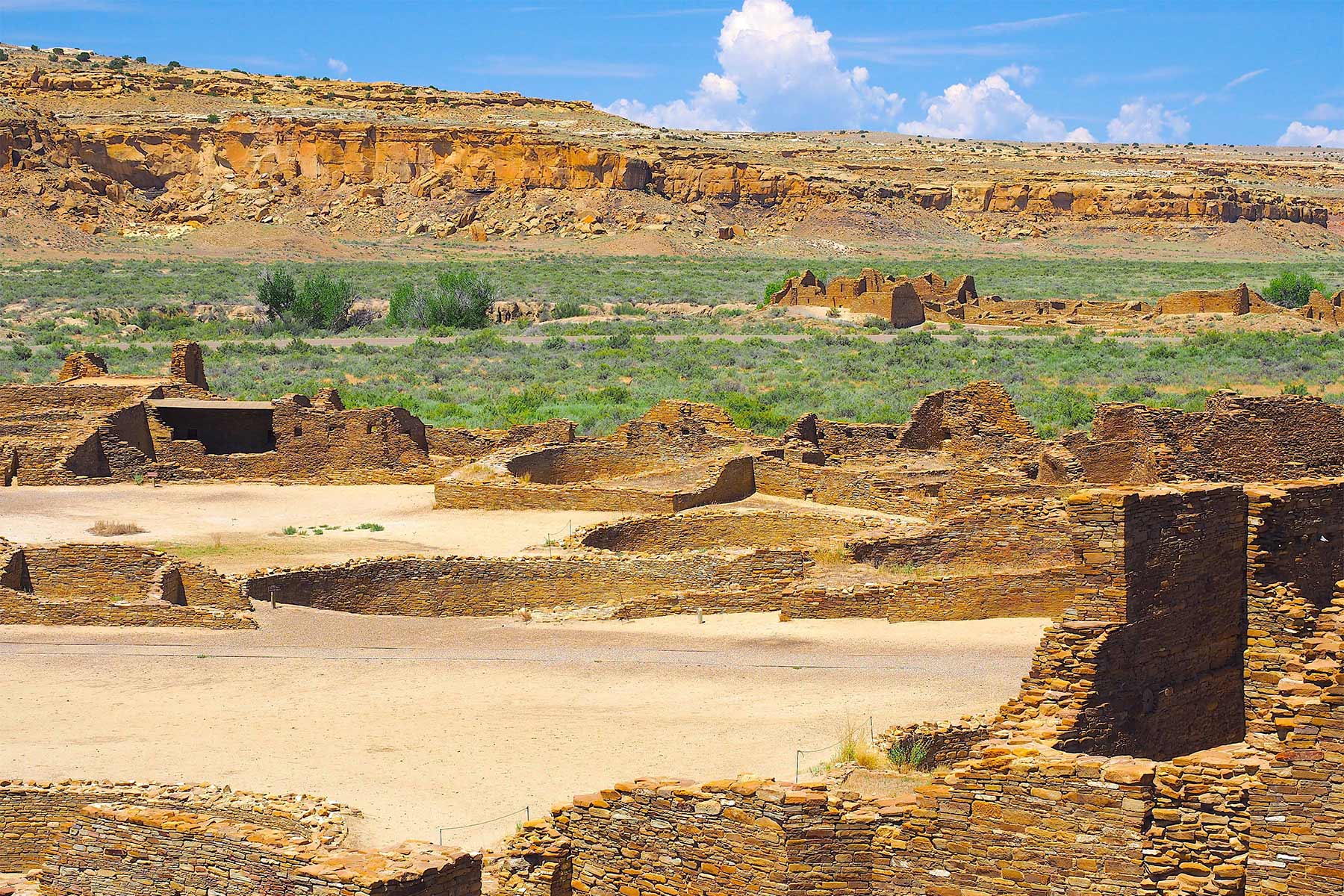
Things To Do
Some of the things to do at the park include:
- Guided Tours: The park offers ranger-led tours of the ancient Chacoan ruins, including the famous Pueblo Bonito, which is the largest Great House in the Chaco Canyon.
- Hiking: The park has several trails that lead visitors to various Chacoan ruins and offer stunning views of the canyon and surrounding landscape.
- Stargazing: With its remote location and dark skies, Chaco Culture National Historical Park is an ideal place for stargazing, and the park offers regular stargazing programs and events.
- Camping: There are several designated campsites within the park for visitors who wish to spend the night and experience the park after dark.
- Cultural Demonstrations: The park hosts demonstrations by Native American artists and artisans, who showcase traditional techniques and practices related to weaving, pottery, and other crafts.
- Wildlife Watching: The park is home to a diverse array of wildlife, including coyotes, deer, and many species of birds, making it a great place for wildlife watching and birding.
- Photography: The park’s stunning scenery and ancient ruins make it a popular destination for photographers, and visitors can capture some amazing images of the Chaco Canyon and surrounding landscape.
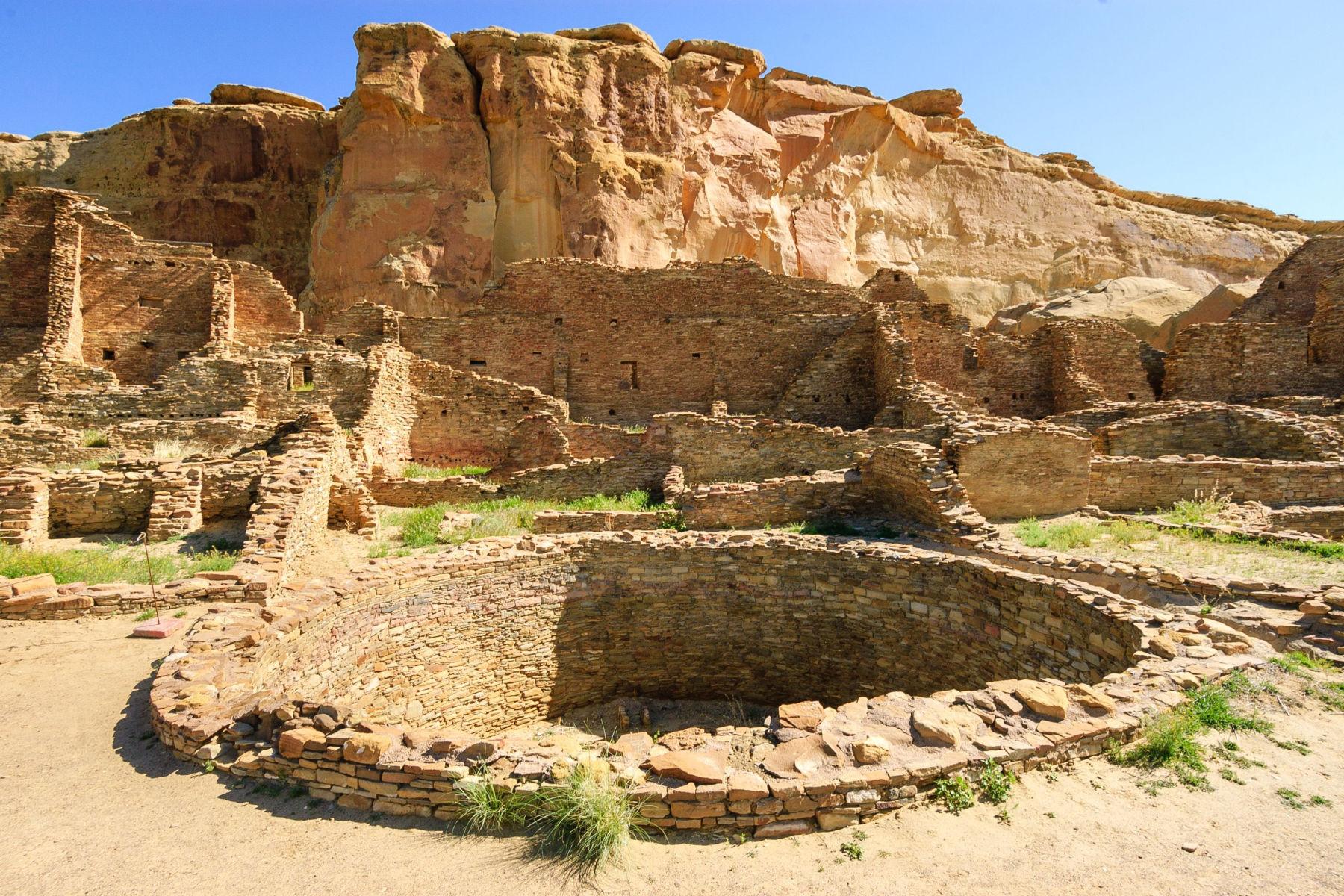
CHECK OUT: 45 BEST National Parks Books
New Mexico National Parks
6. El Camino Real de Tierra Adentro National Historic Trail
If you’re someone who loves to explore historic trails then you’ll be glad you came to visit the New Mexico National Parks especially the El Camino Real de Tierra Adentro National Historic Trail.
The El Camino Real de Tierra Adentro National Historic Trail extends 404 miles between El Paso, Texas to Santa Fe, New Mexico At one time, the historic trail extended all the way to Mexico City.
This trail tells that story of 300 years of conflict, cooperation, and cultural exchange between a variety of empires—European and non-European alike.

There are a variety of wonderful activities for you to choose from along this trail. They include:
- A variety of hiking opportunities across the full length of the trail.
- A visit to the missions along the El Camino Real de Tierra Adentro.
- Museums along the El Camino Real de Tierra Adentro featuring interpretive exhibits, information, and programs.
- Historic sites along the El Camino Real de Tierra Adentro.
For specific information pertaining to sites in New Mexico, please check out this interactive map provided by the National Park Service.

7. El Malpais National Monument
I was born and raised in the Northeast. For me the landscapes of the Southwestern United States possess an otherworldly quality. I had never seen anything quite like their beauty before traveling to see the New Mexico National Parks.
A case in point is El Malpais National Monument. It offers visitors a richly diverse volcanic landscape that is unique to the region.
At El Malpais you can explore incredible geologic features such as lava flows, cinder cones, lava tube caves, and sandstone bluffs.
The name of the national monument comes from the Spanish term “Malpaís”, which means badlands, named because of the harsh conditions and empty volcanic landscape.
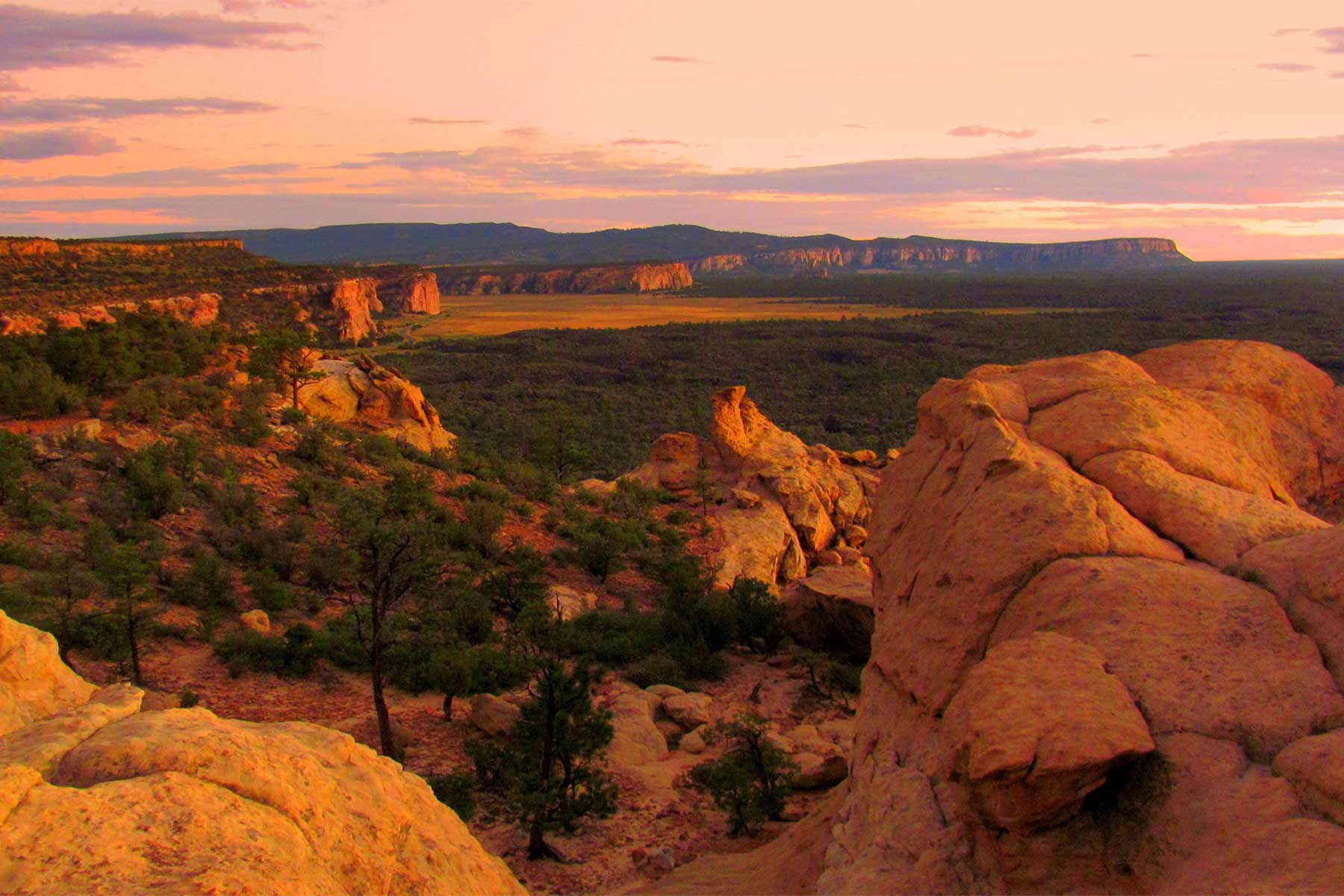
Things To Do
Here are some of the things to do at the monument:
- Hiking: The monument offers several trails for hiking, ranging from easy walks to strenuous backcountry hikes. Visitors can explore the volcanic landscapes, cinder cones, and lava tubes, among other geological features.
- Scenic Drive: The Sandstone Bluffs scenic drive offers breathtaking views of the monument’s sandstone formations and provides access to several hiking trails and picnic areas.
- Cave Exploring: El Malpais is home to a number of lava tubes, and visitors can explore some of these unique geological formations by taking a guided tour.
- Rock Climbing: The monument is a popular destination for rock climbers, and there are several climbing areas within the monument that offer challenging routes for climbers of all skill levels.
- Wildlife Watching: El Malpais is home to a variety of wildlife, including coyotes, pronghorns, and many species of birds, and visitors can enjoy wildlife watching and birding throughout the monument.
- Camping: There are several designated campgrounds within the monument, and visitors can spend the night and experience the unique geology and scenery after dark.
- Backcountry Adventures: For more adventurous visitors, El Malpais offers opportunities for backpacking, horseback riding, and other backcountry activities, and visitors can explore the remote and rugged landscapes of the monument.
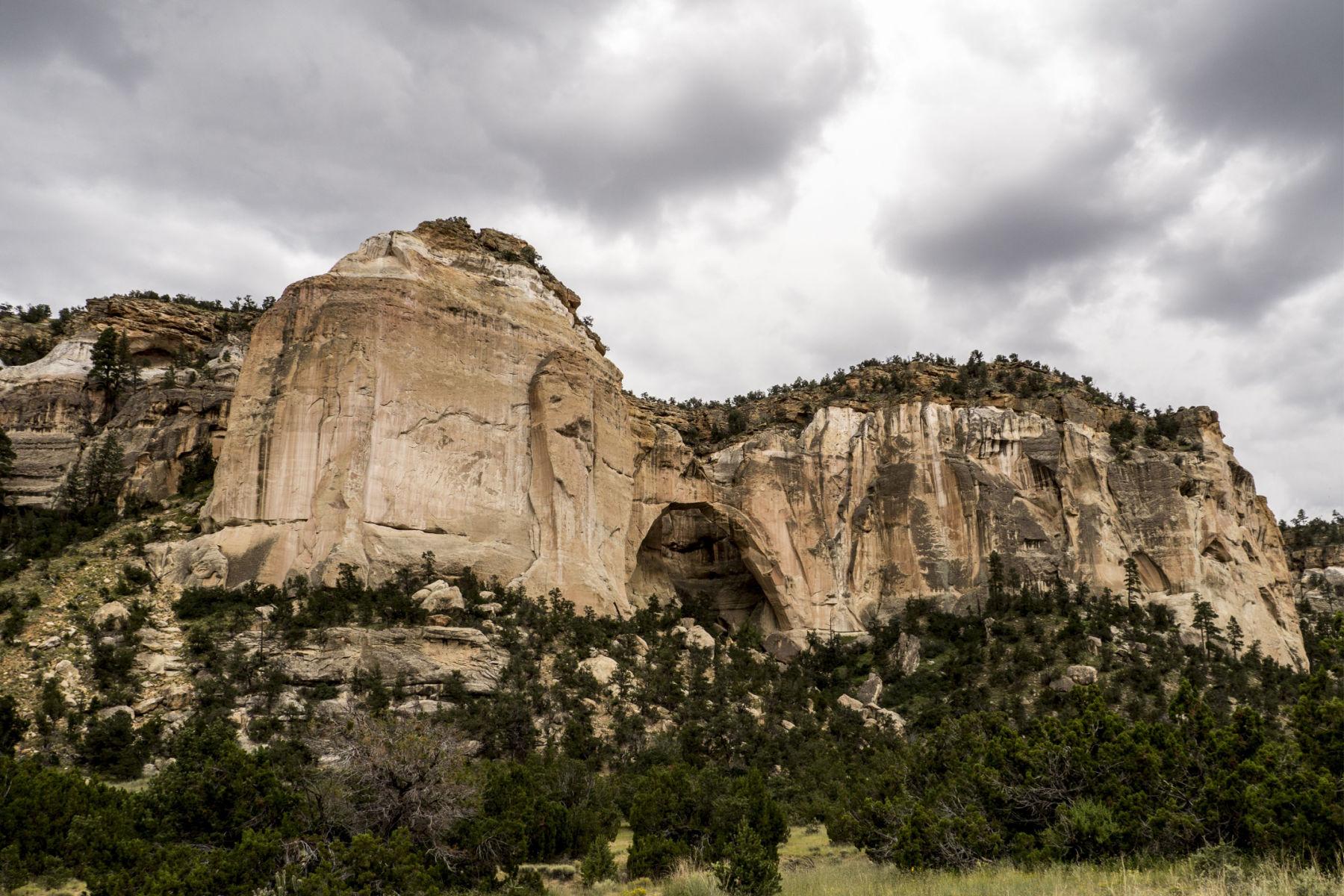
8. El Morro National Monument
Home to beautiful cliffs and stunning landscapes, El Morro is one of the most beautiful New Mexico National Parks.
If you were a desert traveler like the Ancient Puebloans then the first thing on your travel agenda would be water. If you forgot about water you likely wouldn’t be around to forget about anything else.
For these travelers, El Morro was a reliable waterhole hidden at the base of a sandstone bluff. Referred to as “El Morro” (the headland), it became a popular campsite hundreds of years ago.
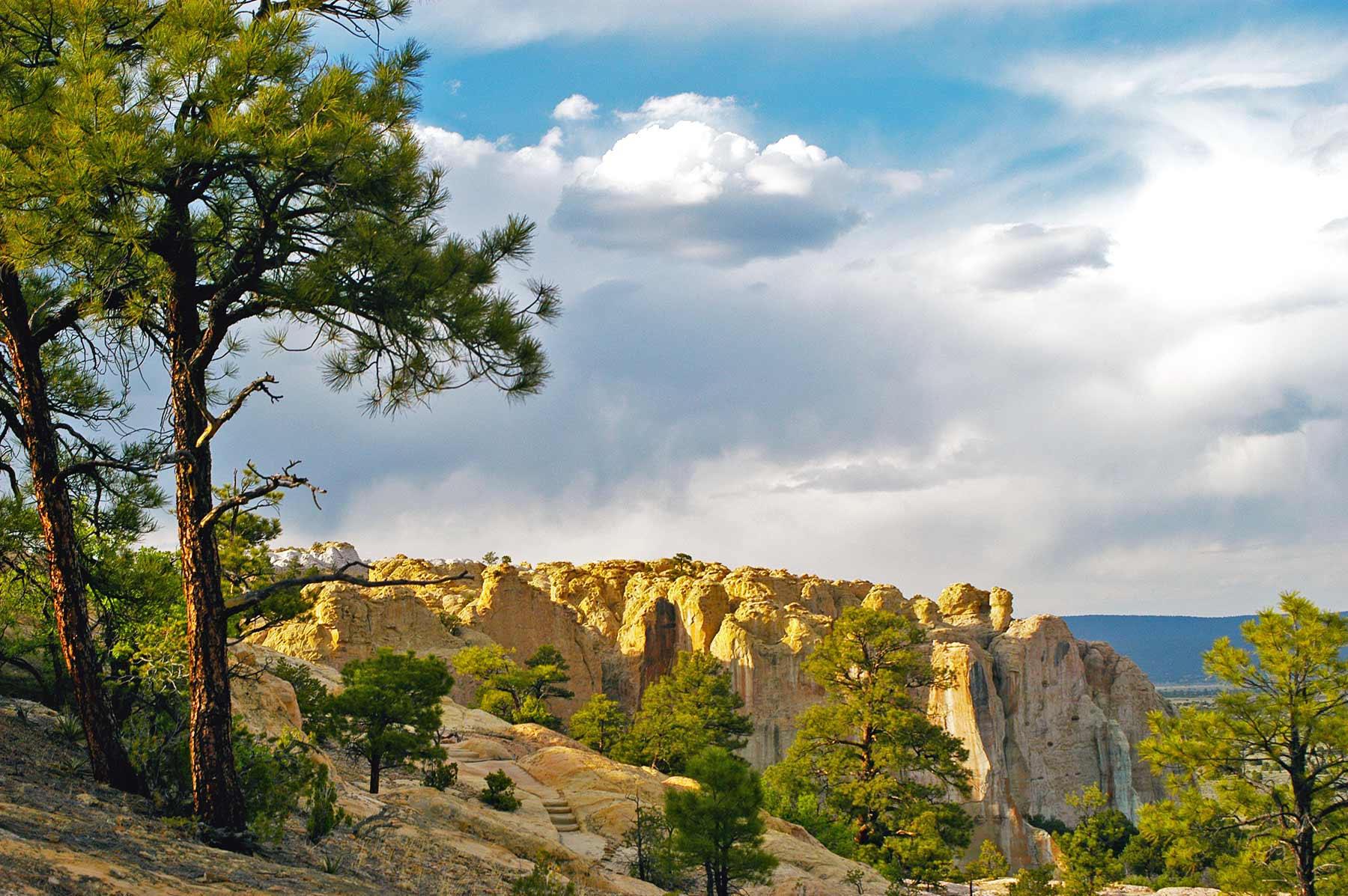
RELATED: List of 128 US National Monument (RANKED)
You’ll Have 2 Trails To Choose From
Visitors to El Morro have two wonderful hiking trails to choose from.
- The Inscription Trail will take you to a shady oasis (the pool). Along the way you’ll pass hundreds of Spanish and Anglo inscriptions, as well as pre–historical petroglyphs. This loop trail is paved, 1/2 mile in length, and wheelchair accessible with assistance.
- The Headland Trail is a 2–mile loop which includes the Inscription Trail. It continues to the top of the bluff. There you’ll be treated to spectacular views of the Zuni Mountains, the volcanic craters of the El Malpais area, and the El Morro valley. On this trail is the Ancestral Puebloan ruin, Atsinna, or “place of writings on rock.” There, between approximately 1275 to 1350 AD, up to 600 people lived in this 355 room pueblo.
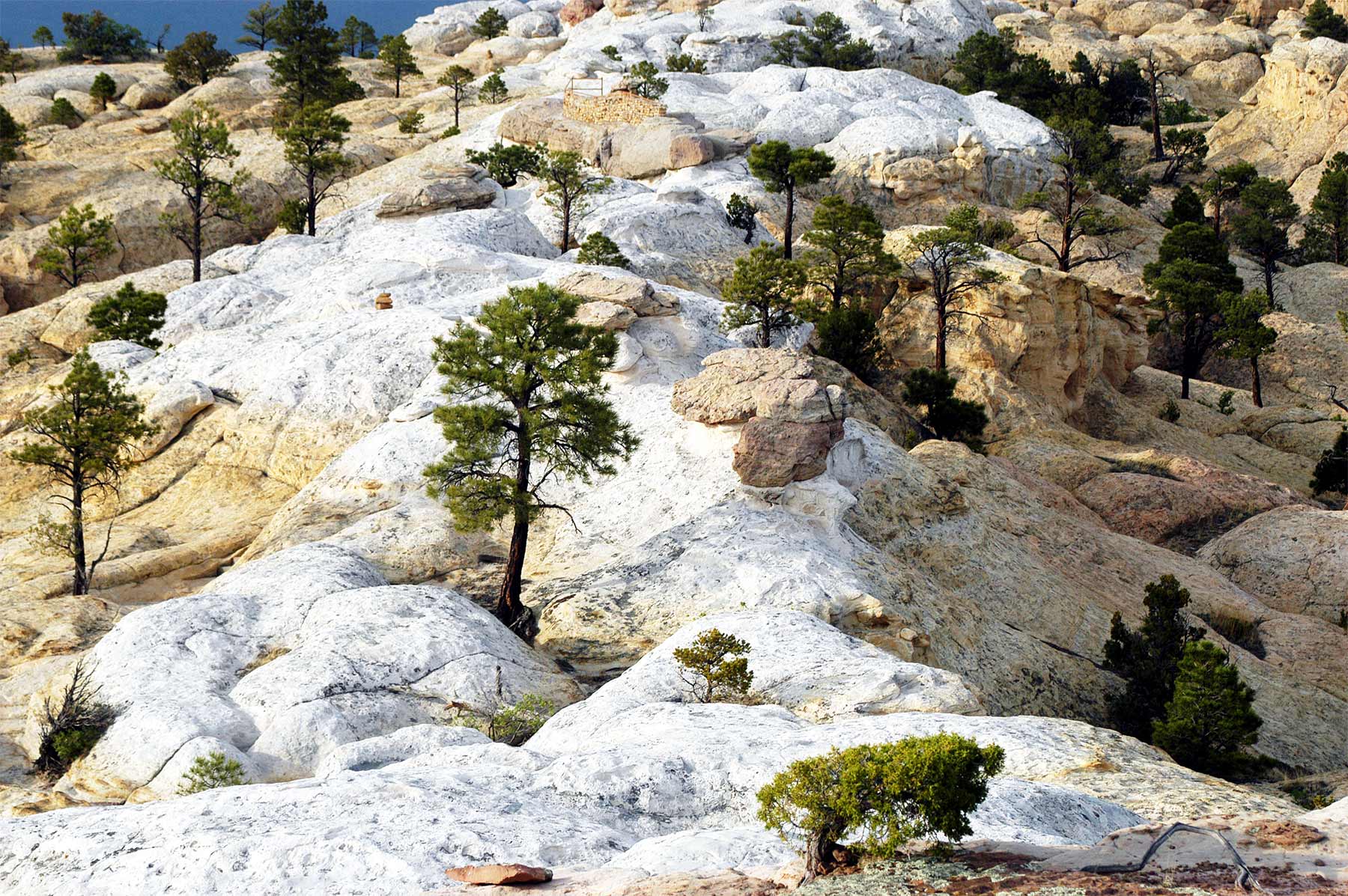
9. Fort Union National Monument
Fort Union National Monument was established in 1954 to preserve and interpret the history of the fort and the role it played in the American West. The fort was established in 1851 as a military post to protect the Santa Fe Trail and to serve as a supply depot for military campaigns against Navajo and Apache tribes.
Over the next several decades, Fort Union served as an important hub of military, trade, and cultural exchange in the American West. The fort was strategically located along the Santa Fe Trail and was used as a base for military operations against Navajo and Apache tribes, as well as for escorting wagon trains and surveying expeditions.
During the Civil War, Fort Union remained loyal to the Union and played a key role in the Union’s campaigns against Confederate forces in the Southwest. After the war, the fort continued to be used as a military post and as a supply depot for troops in the West.

Things To Do At Fort Union
There are several activities to do at Fort Union National Monument:
- Take a guided tour of the historic fort ruins and learn about its significance during the American Civil War.
- Explore the museum and exhibits to gain insight into life at the fort during its active years.
- Hike the trails that run through the park and take in the breathtaking scenery of the surrounding area.
- Participate in ranger-led programs and activities, such as campfire talks, walks, and workshops.
- Enjoy a picnic with family and friends in the park’s picnic area.
- Take a scenic drive through the park to admire the rugged beauty of New Mexico.
- Visit the gift shop to purchase souvenirs and mementos of your visit.
- Attend special events, such as the annual Santa Fe Trail Association rendezvous, which recreates life in the mid-19th century.
CHECK OUT: Ten BEST Civil War Sites In America
10. Gila Cliff Dwellings National Monument
Imagine a neighborhood that’s been around for thousands of years. You would need some very special dwellings to accomplish that.
Gila Cliff Dwellings National Monument preserves the remains of an ancient Native American civilization. The monument contains a series of caves with well-preserved cliff dwellings that were built by the Mogollon people.
The Mogollon people lived in the Gila Wilderness between AD 1275 and AD 1300, and the cliff dwellings were used as their homes and storage spaces.
The cliff dwellings were discovered in the late 1800s, and the site was established as a national monument in 1907. The structures are unique in that they are some of the few remaining examples of cliff dwellings in the American Southwest. The dwellings are made of stone and adobe and were built into the cliffs for protection from the elements and from potential enemies.
Today, visitors to Gila Cliff Dwellings National Monument can tour the site, learn about the Mogollon people and their way of life, and appreciate the remarkable architecture of the cliff dwellings.
The monument offers a glimpse into a fascinating chapter in American history and is a testament to the ingenuity and resourcefulness of the ancient peoples who lived there.
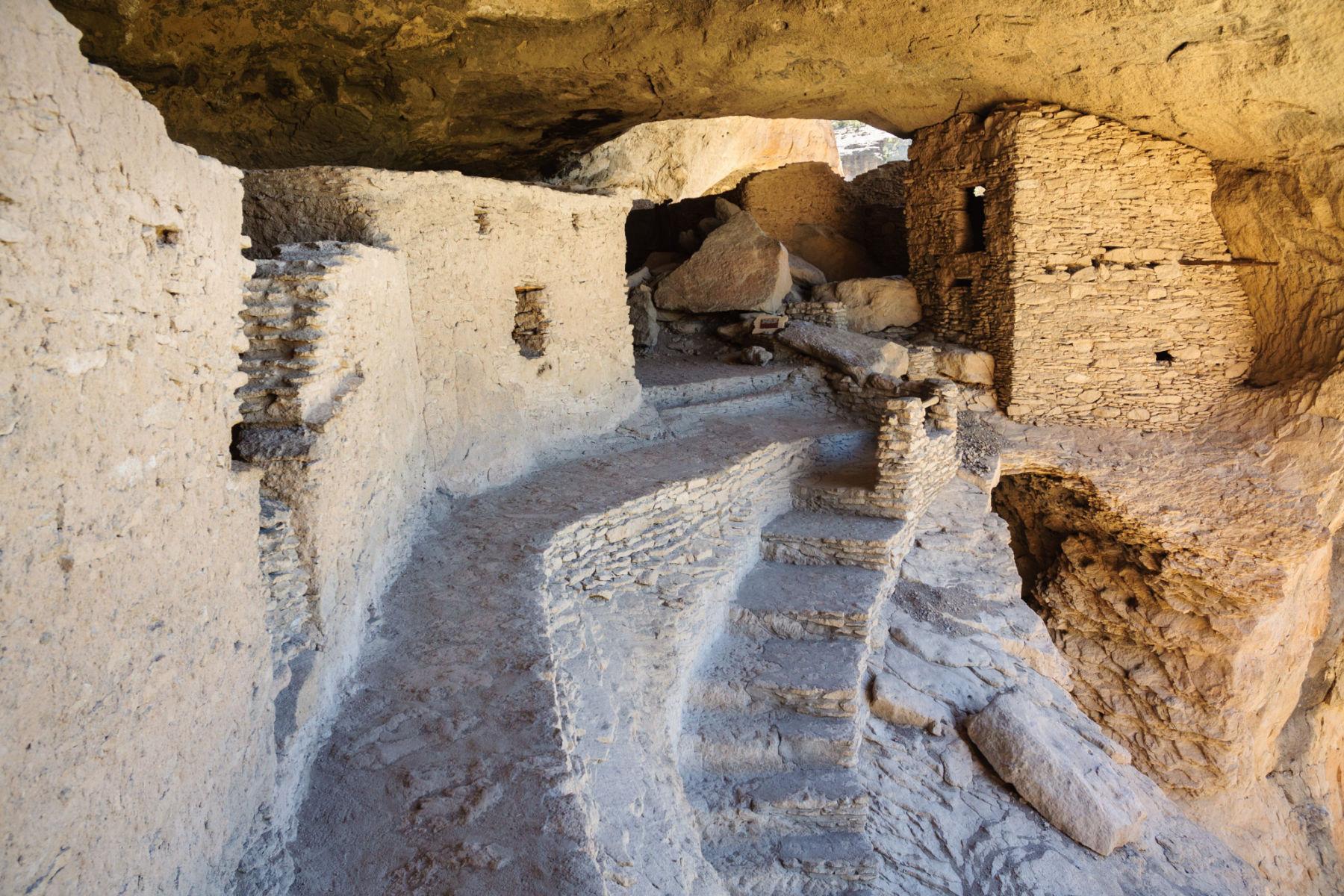
More New Mexico National Parks
11. Manhattan Project National Historical Park
Where can you go from cliff dwellings thousands of years old to the dawn of the nuclear age? Why New Mexico, of course! It’s there that the United States developed the deadliest weapon known to humankind.
Manhattan Project National Historical Park is a series of sites across the United States that commemorate the history of the Manhattan Project, a top-secret government research project during World War II that developed the first atomic bombs.
The park was established in 2015 and consists of three sites: the Hanford B Reactor in Washington state, the Manhattan Project headquarters at Los Alamos, New Mexico, and the former uranium enrichment facilities at Oak Ridge, Tennessee.
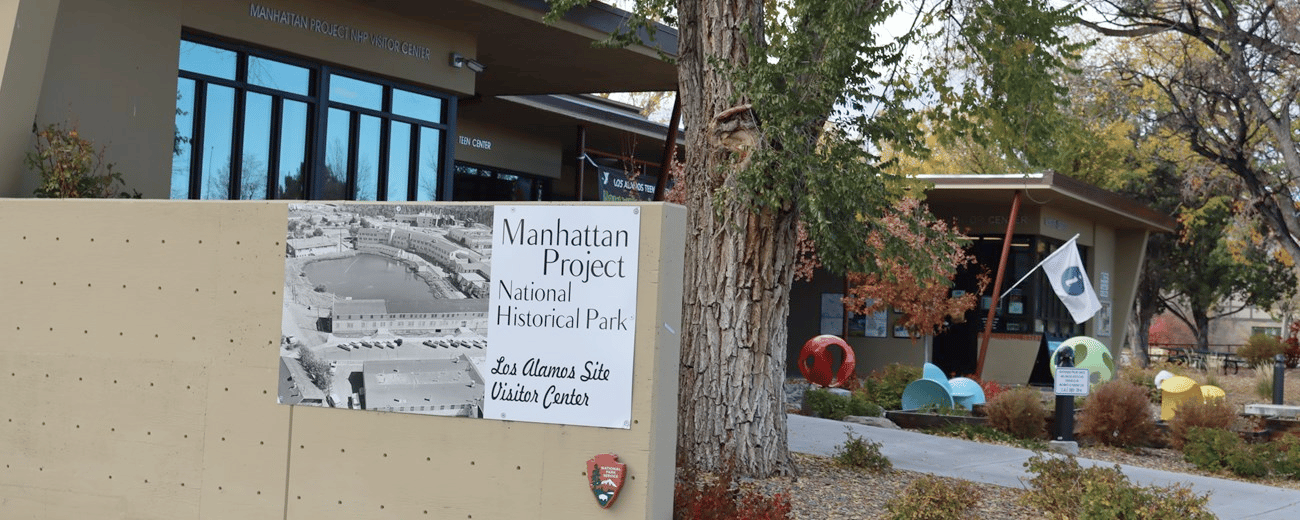
Development Of The Ultimate Weapon
The Manhattan Project was initiated in 1942 in response to fears that Nazi Germany was developing atomic weapons.
The project was led by physicist J. Robert Oppenheimer and brought together some of the brightest scientific minds of the time, including Enrico Fermi, Glenn Seaborg, and Richard Feynman.
The project was conducted in secret, with strict security measures in place to prevent information from leaking out.

The Manhattan Project ultimately succeeded in producing two atomic bombs, which were used by the United States in the bombing of Hiroshima and Nagasaki, Japan in August of 1945. The bombing played a major role in ending World War II and marked the dawn of the atomic age.
The Manhattan Project National Historical Park is a unique and important part of American history, and its sites serve as a reminder of the immense scientific, technological, and political achievements of the Manhattan Project, as well as the impact that the project had on the world.

Things To Do At Los Alamos, New Mexico
You can learn about the Manhattan Project by visiting the park’s visitor center in the historic town of Los Alamos. From there you can hike desert trails, explore local museums, enjoy guided tours and visit historic sites within the community.
Tours of the Los Alamos and Trinity Sites are only offered at specific times of the year. The Los Alamos tours take visitors to historic buildings including Pond Cabin and a building that Nobel Laureate Emilio Segrè and his team used.
Visitors will also see Battleship Bunker, a building used for implosion diagnostic testing, and the Slotin Building where physicist Louis Slotin succumbed to a deadly radioactive accident.
The location of this test, known as the Trinity Site, is located on White Sands Missile Range and is closed to the public except for twice during the year when the U.S. Military opens this facility to the public. (Source: NPS)

Other Places In Los Alamos Accessible To The Public
There are other fascinating places where you can go in Los Alamos and these include:
- The Los Alamos Nature Center which gives you the chance to learn more about the incredible wildlife and natural history in this area.
- The Los Alamos History Museum. It’s located in downtown Los Alamos. There you can learn about the stories of the atomic secret city from multiple perspectives via indoor and outdoor venues, historic buildings, artifacts, documents, photographs, audio and video recordings of personal stories, and interactive visitor experiences.
- You can also go to the Bradbury Science Museum. There you’ll learn about the scientific history of Los Alamos and explore interactive exhibits.
- If you’re more interested in nature than science you can also hike the Kwage Mesa Trail where you’ll have a spectacular view of the canyons and mesas of the Pajarito Plateau.

12. Old Spanish National Historic Trail
The Old Spanish National Historic Trail goes through Arizona, California, Colorado, Nevada, New Mexico, and Utah. It opened a land route across 19th century Mexico between the Tierra Adentro, the fabled, yet isolated place that would become New Mexico, and California’s missions and burgeoning settlements.
When he left Abiquiu, New Mexico for California in 1829 with 40 men and 200 pack mules, Antonio Armijo blazed a trail between the two colonies that had frustrated explorers for over a century.
The Abiquiu Party discovered that their woolen blankets and tanned hides were welcomed in textile-starved California. What began as a commercial venture would grow into so much more.

Journey The Old Spanish National Historic Trail
Today this historic trail extends 2,700 miles across New Mexico, Colorado, Utah, Arizona, Nevada, and California. Along the way there are museums, historic sites, landmarks, and trail markers.
Two places you ought to visit while in New Mexico are the Santa Fe Plaza and the Palace of the Governors.
The Santa Fe Plaza has long been the spatial, economic, and social center of New Mexico’s capital city. Accordingly, it is the location of various historic buildings and events throughout New Mexico’s history. Now half its original size, the Plaza is landscaped with flagstone, walks, benches, and trees.
Since 1610, the Palace of the Governors has housed the offices and living quarters of 58 Spanish Colonial Governors, 16 Mexican Governors, four military and three civilian governors during U.S. rule, and 17 Territorial Governors.
The building endured the 1680 Pueblo Indian Revolt; the 1692-1693 Spanish reconquest; the 1846 arrival of Brigadier General Kearny; and the 1862 invasion of Texas Confederate Troops. (Source: NPS)
13. Pecos National Historic Park
Each of the New Mexico National Parks has a different story to tell. At Pecos National Historic Park it’s the story of the Cicuye people and how they fought back against colonial oppression.
Once the Spanish arrived these people were enslaved. They were forced to build churches. The Pueblo Revolt of 1680 was a revolution against Spanish religious, economic, and political institutions imposed upon the Pueblos.
It is the only successful Native uprising against a colonizing power in North America.
The revolt kept the Spanish out of New Mexico for 12 years and established a different relationship between Spain and the indigenous peoples upon their return.

Things To Do At Pecos National Historic Park
The park has a visitor center, hiking trails, and ranger-guided programs. I recommend beginning your adventure at the visitor center. There you will find a museum exhibits, a bookstore with gift shop and a 12-minute introductory film.
There are three hiking trails available. They include:
- The 1.25 mile Ancestral Sites Trail where you’ll discover the remains of the Pecos Pueblo and 1717 Spanish mission church.
- The 2.3 mile Civil War Battlefield Trail where you’ll explore the history of the Battle of Glorieta Pass.
- The South Pasture Trail, which is only open on weekends.
14. Petroglyph National Monument
Petroglyph National Monument is a fascinating look into the past.
It protects one of the largest petroglyph sites in North America, featuring designs and symbols carved onto volcanic rocks by Native Americans and Spanish settlers 400 to 700 years ago.
These images are a record of cultural expression and hold profound spiritual significance for contemporary Native Americans and for the descendants of the early Spanish settlers.
There is no museum or exhibits at this monument. At Petroglyph’s visitor center you can pick up a park brochure and trail maps.
Located on the western edge of the monument, the park’s trail system offers scenic miles of hiking around the volcanic cinder cones.
From there you’ll enjoy the clear views of the Rio Grande valley and the Sandia Mountains from the scenic overlook. These trails vary in length from 1 mile to 4 miles round-trip.
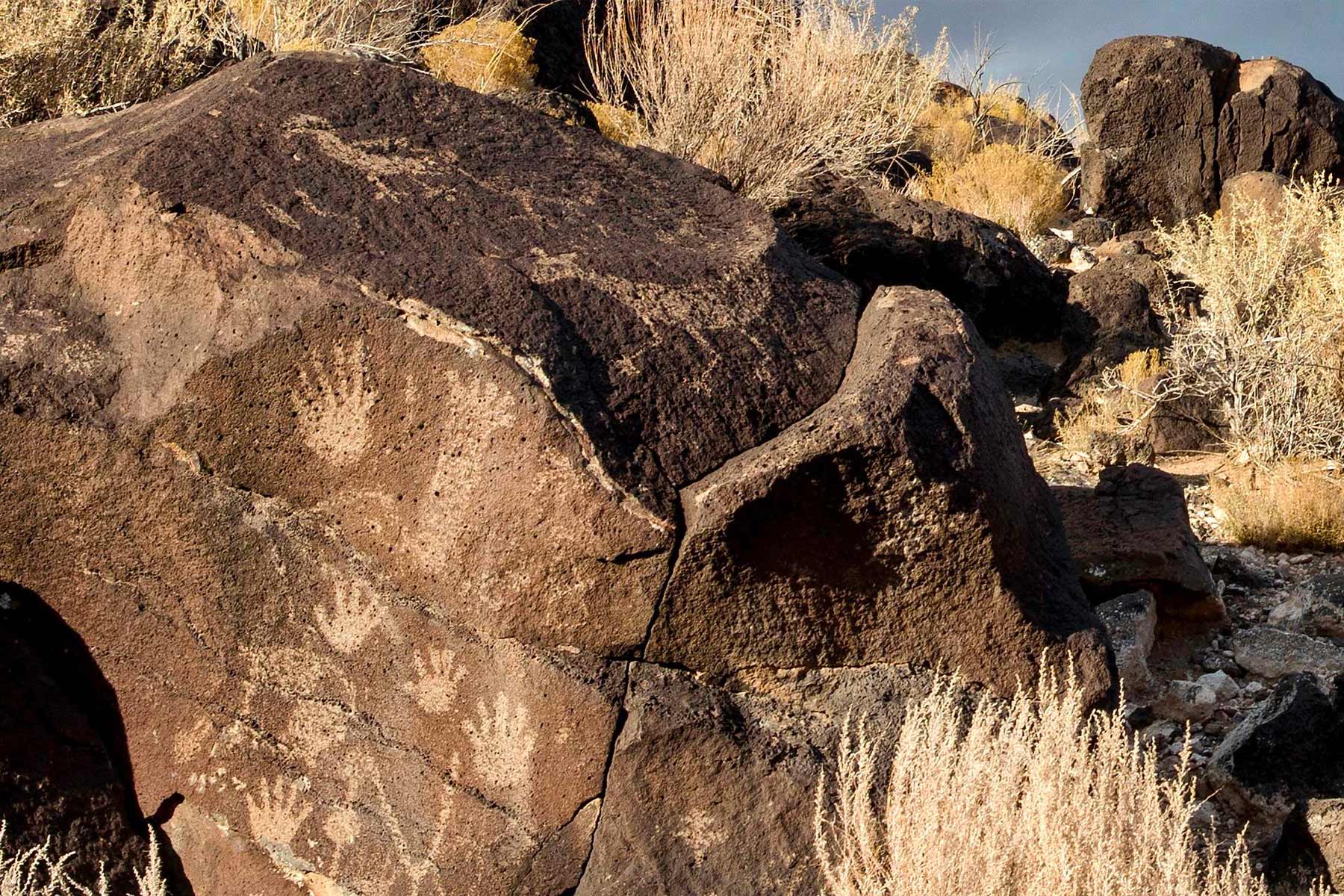
See The Amazing Petroglyphs
If you’re looking to see the petroglyphs the trails you’ll want to take include:
- Boca Negra Canyon: 1 hour, 100 petroglyphs, developed trail system.
- Rinconada Canyon: 2.2 miles round trip, 2 hours, 200-300 petroglyphs, undeveloped trail system, no water.
- Piedras Marcadas Canyon: 1.5 miles round trip, 1.5 hours, 300-500 petroglyphs, undeveloped trail system, no water, no restrooms.
- Volcanoes Day Use Area: 1 mile to 4 miles round trip, 1-4 hours, no petroglyphs, undeveloped trail system, no water.
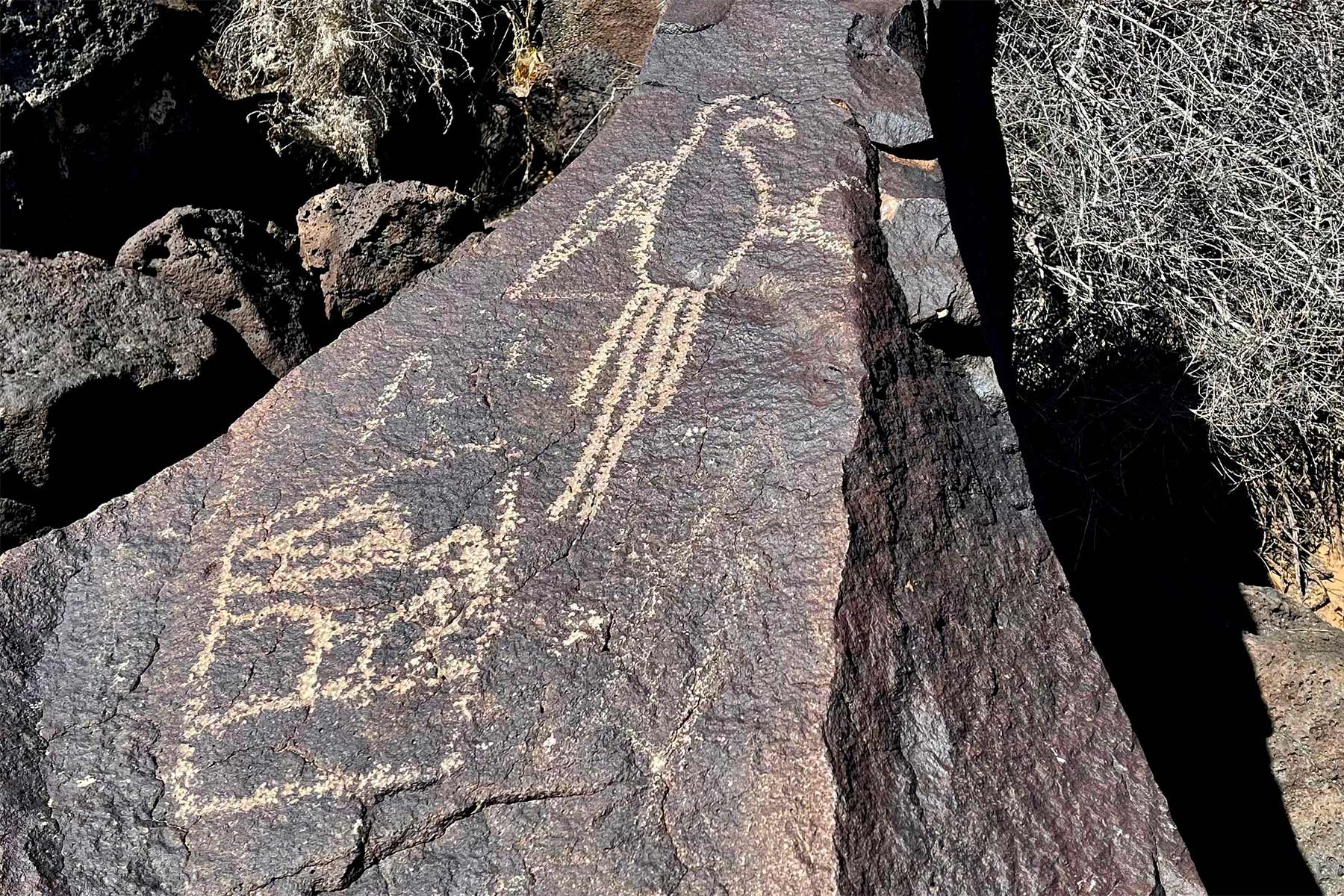
15. Salinas Pueblo Missions National Monument
New Mexico National Parks abound in the history of the American Southwest. At Salinas Pueblo Missions National Monument visitors will find three distinct sites offering a unique glimpse into a different time in history.
These sites serve as reminders of the Spanish and Pueblo peoples’ early encounters and prompt exploration of today’s interactions among different people. These sites include:
- At Abo you can enjoy a walk through the 17th century Mission of San Gregorio de Abó and see the Spanish Resettlement Structures.
- Quarai is a place where you can walk through the Nuestra Señora de La Purisima Conception de Cuarac, enjoy some spectacular bird watching and hike the one mile Spanish Corral Trail.
- At Gran Quivira you can explore an excavated Pueblo Mound and two Mission Churches. Or visit the museum and see the different tools and artifacts made by the people of Las Humanas.
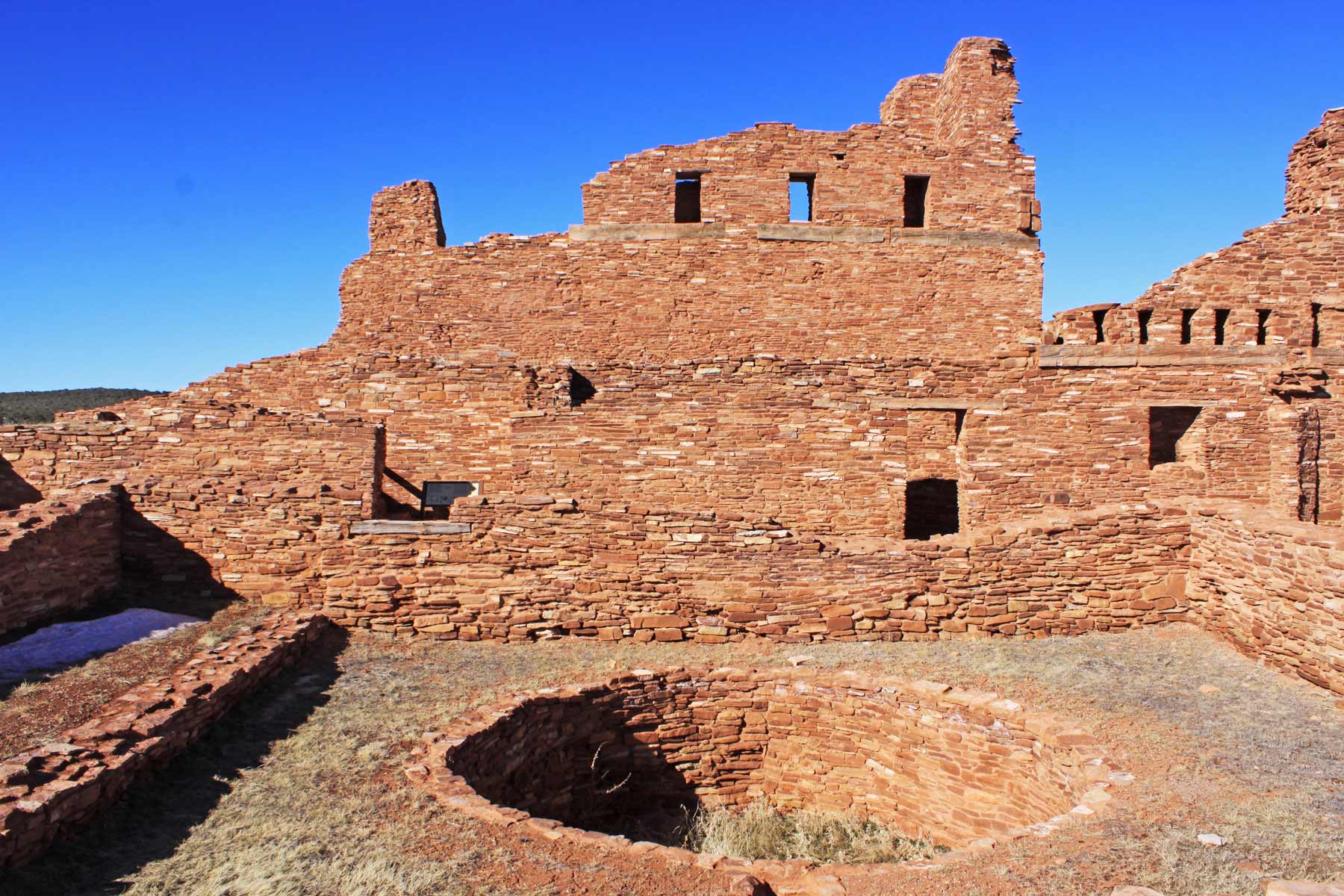
Still More New Mexico National Parks
16. Santa Fe National Historic Trail
Westward Ho! We’ve got another great New Mexico National Park site for you!
The Santa Fe National Historic Trail is a historic trail that runs from Missouri to Santa Fe, New Mexico, and played a significant role in the westward expansion of the United States in the 19th century. The trail was used primarily by traders, settlers, and other travelers as a way to cross the Great Plains and reach the Southwest.
The trail was established as a trade route in the 1820s, and by the late 1830s, it had become one of the most important commercial routes in the West. The Santa Fe Trail was also used by military expeditions and was the site of several significant events in American history, including the Mexican-American War.
In the 1850s, the Santa Fe Trail saw a decline in traffic as the transcontinental railroad was built and travelers found faster, easier ways to reach Santa Fe. Despite this, the trail remained an important route for cattle drives, and it played a role in the development of the American West.
Today, the Santa Fe National Historic Trail is a popular recreational resource, with portions of the trail open for hiking, horseback riding, and other outdoor activities.
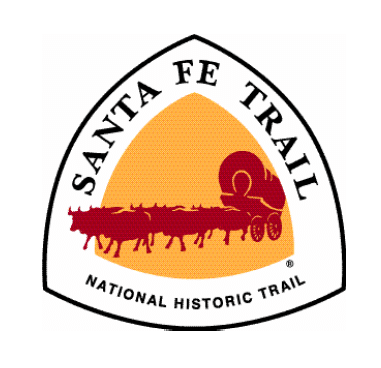
The trail is also an important historical site, with numerous markers, monuments, and interpretive centers along the way that tell the story of the trail and the people who used it. The trail is a testament to the pioneering spirit of the American West and is an enduring symbol of America’s westward expansion.
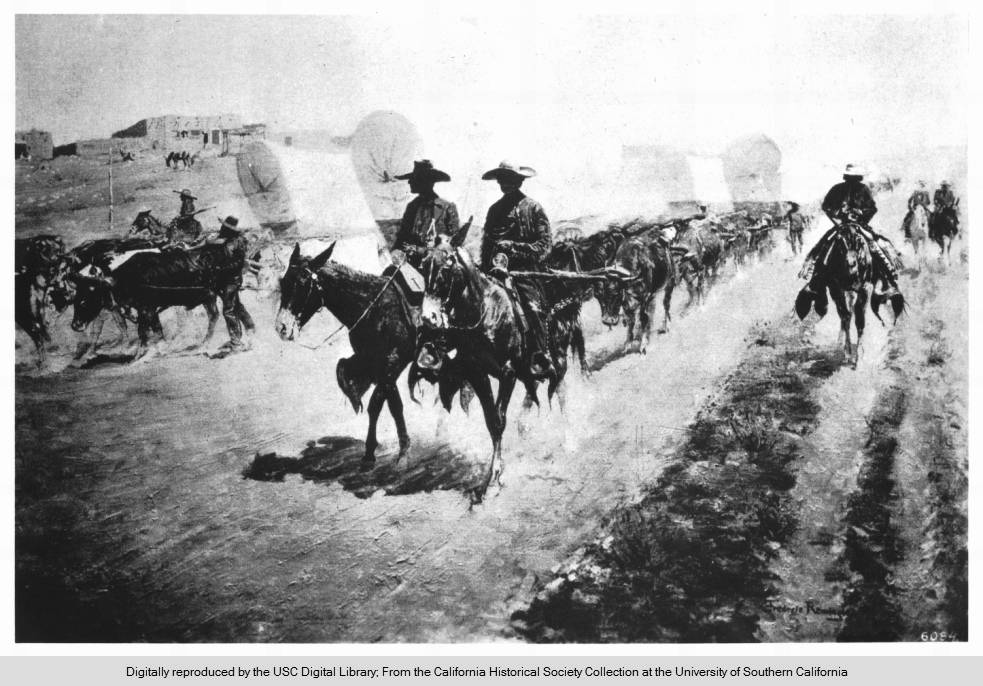
The Routes
There were two major routes. Some used the Mountain Route, which offered more dependable water, but required an arduous trip over Raton Pass.
Others took the Cimarron Route. It was shorter and faster, but required knowledge of where the route’s scarce water supplies were located. It you ran out of water then you weren’t likely to survive the journey.
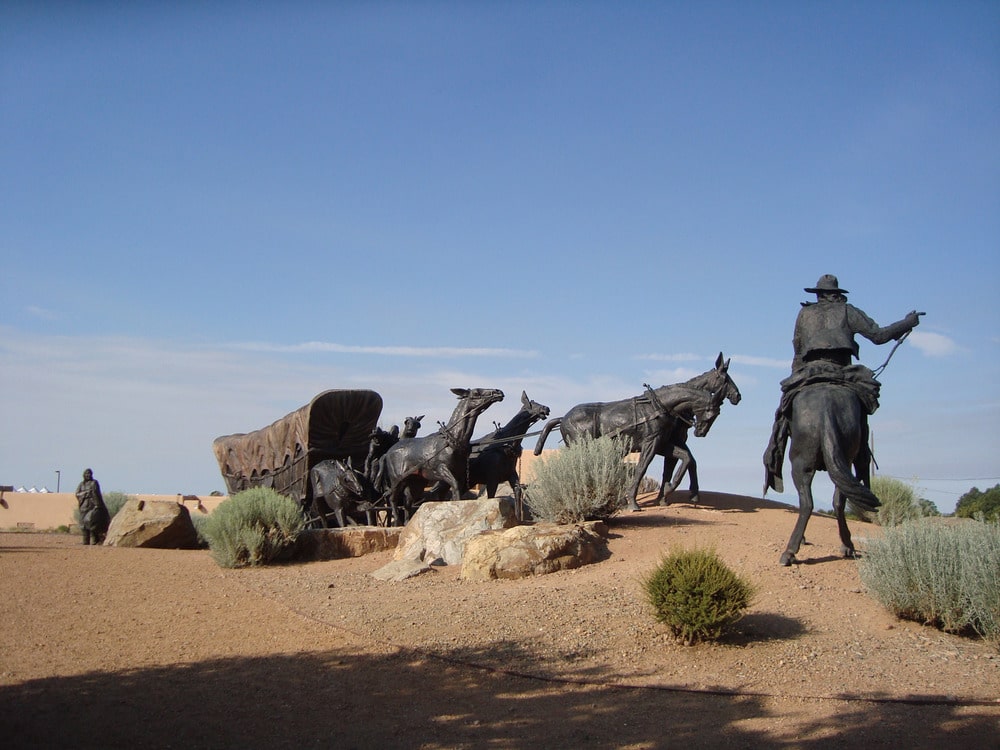
RELATED: 45 Best National Parks Books (Great Gifts For Park Lovers)
Particular Points Of Interest
If you’re planning a trip then I would recommend that you definitely see the following five sights:
Rabbit Ears Mountain served as a vital landmark for Santa Fe Trail travelers on the Cimarron Route.
Santa Clara Cemetery was a landmark for covered wagon trains and traders going up and down the Santa Fe Trail. It’s now the Wagon Mound National Historic Landmark.
Starvation Peak is a butte that sits at over 7,000 feet, located along Interstate 25 between the town of Pecos and Las Vegas.
Raton Pass which was one of the segments of the Mountain Branch of the Santa Fe Trail. It cut through the snow-capped Sangre de Cristo Mountains, allowing wagons access to the vast western territory.
Santa Fe Spring which was an important water source for Santa Fe Trail travelers heading West.
17. Valles Caldera National Preserve
There is history and then there is history. About 1.25 million years ago, a spectacular volcanic eruption created the 13-mile wide circular depression now known as the Valles Caldera. Today it is much more than its geologic past however.
Valles Caldera National Preserve is known for its huge mountain meadows, abundant wildlife, and meandering streams. Valles Caldera preserves the homeland of ancestral native peoples and embraces a rich ranching history.
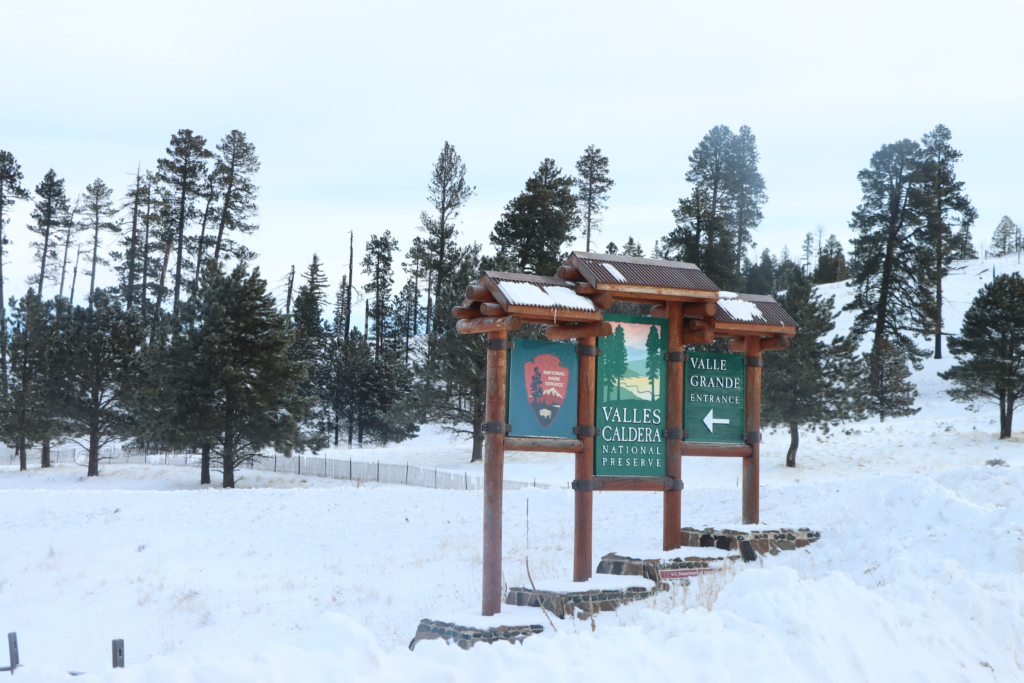
Things To Do
Some of the things to do at Valles Caldera include:
- Hiking: There are numerous trails in the preserve that offer a chance to explore the diverse landscapes, including forests, meadows, and volcanic features.
- Fishing: There are several streams and lakes in the preserve that offer excellent fishing opportunities, with species such as rainbow trout and brown trout.
- Wildlife viewing: The preserve is home to a variety of wildlife, including elk, deer, black bears, and birds of prey.
- Horseback riding: Horseback riding is permitted on some trails in the preserve and is a great way to explore the scenic landscapes.
- Camping: There are several designated camping areas in the preserve, offering a chance to experience the natural beauty of the area.
- Guided tours: The preserve offers ranger-led tours and educational programs that provide insight into the history, geology, and ecology of the area.
- Photography: The preserve offers many opportunities for photographers to capture the beauty of the volcanic landscapes, wildlife, and more.
- Wildlife watching: The preserve is home to a diverse range of wildlife species, including elk, deer, black bears, and a variety of bird species, making it a great place for wildlife watching.
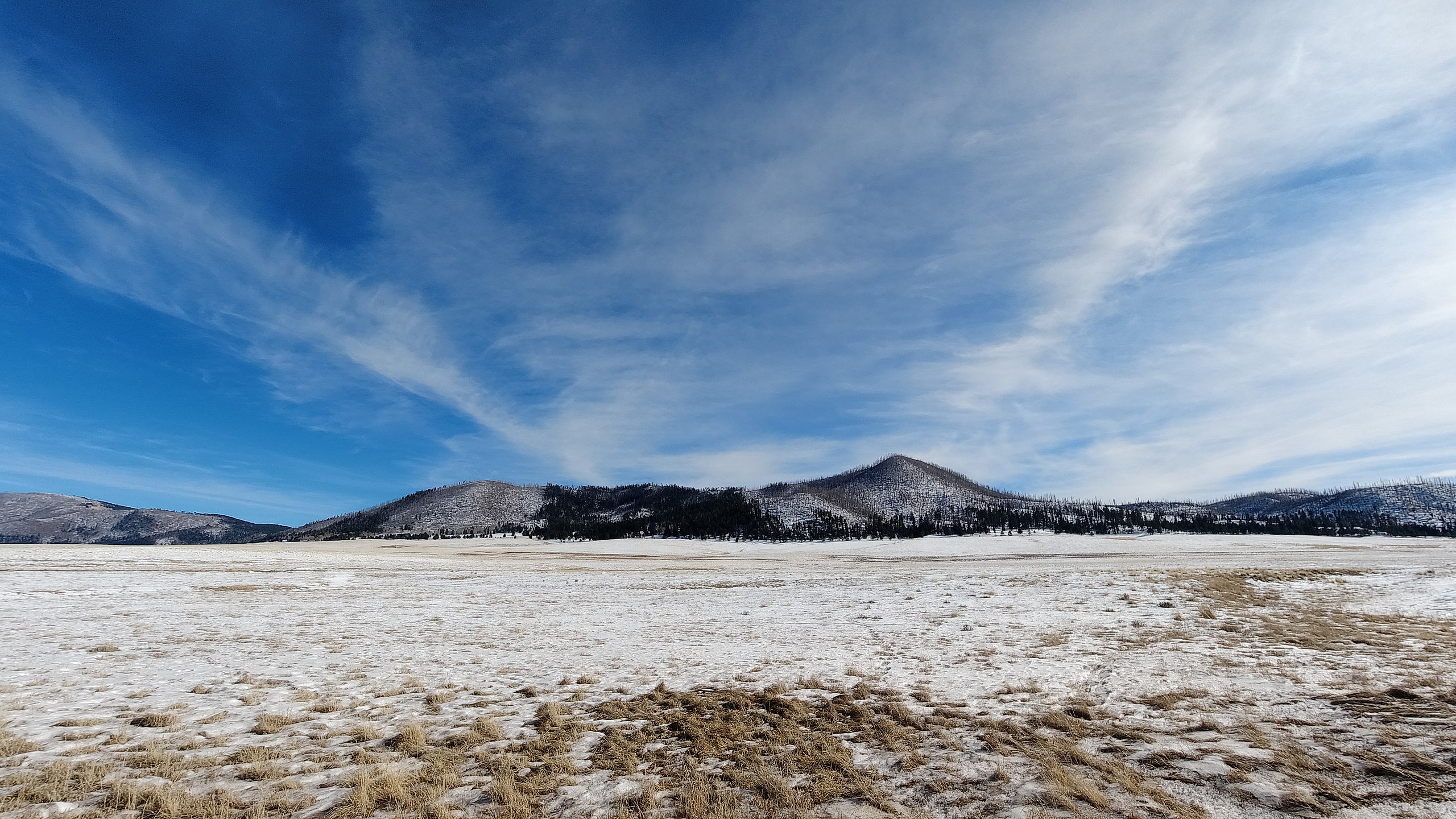
18. White Sands National Park
One of my favorite New Mexico National Parks is White Sands National Park. It’s one of the newest additions to America’s national parks.
The park is located in southern New Mexico and is known for its vast, stunning field of white sand dunes that covers over 275 square miles. The sand is made of gypsum crystals and is one of the world’s largest deposits of this mineral.
The park’s unique landscape was formed from the erosion of nearby mountains and the deposition of gypsum in the Tularosa Basin. Over time, the wind has shaped the sand into rolling dunes that are constantly shifting and moving.
Visitors to White Sands National Park can enjoy a variety of outdoor activities, including hiking, sand sledding, and picnicking. There are several marked trails that wind through the dunes, offering stunning views of the surrounding desert and mountains. The park also offers ranger-led programs and interpretive displays that provide information about the geology, wildlife, and history of the area.
In addition to its beautiful dunes, White Sands National Park is also home to a variety of unique wildlife, including lizards, insects, and plants that have adapted to the harsh desert environment.
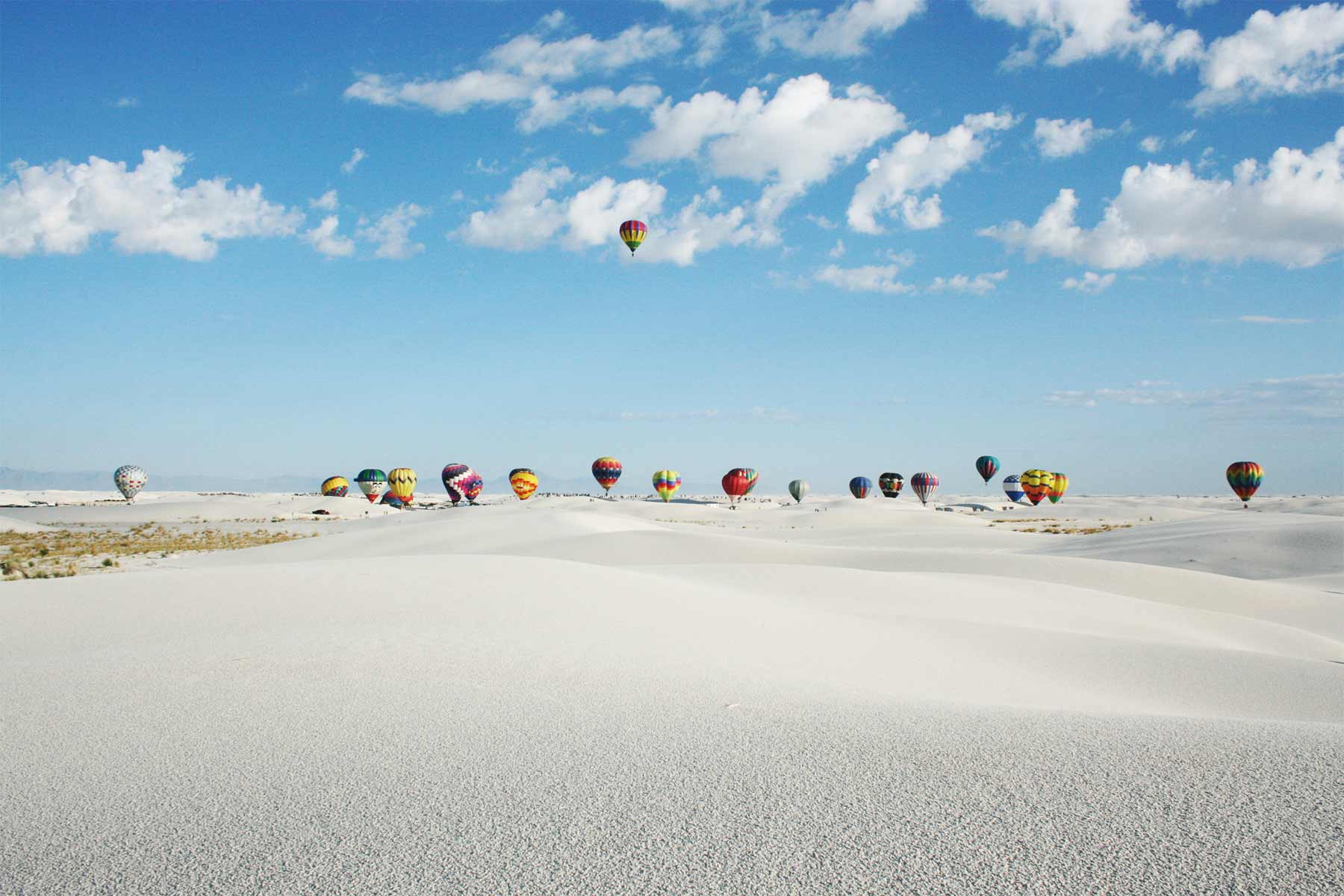
Things To Do At White Sands
White Sands National Park offers a variety of outdoor activities for visitors to enjoy, including:
- Hiking: There are several marked trails in the park that offer the opportunity to explore the vast dunes and scenic landscapes.
- Sand sledding: Visitors can bring their own sand sleds or rent them on site, and enjoy the thrill of sliding down the soft, white dunes.
- Wildlife viewing: The park is home to a variety of unique wildlife, including lizards, insects, and plants that have adapted to the desert environment.
- Picnicking: There are several picnic areas in the park, offering a chance to relax and enjoy a meal in a beautiful setting.
- Photography: The stunning white dunes and surrounding desert landscapes provide many opportunities for photographers to capture unique and beautiful images.
- Ranger-led programs: The park offers a variety of ranger-led programs, including guided hikes, educational talks, and night sky programs.
- Stargazing: White Sands is a certified International Dark Sky Park, offering visitors the chance to gaze at the stars in a virtually light-pollution-free environment.
- Geology exploration: The park’s unique geology, including its gypsum dunes and nearby mountains, provide opportunities to learn about geology and geomorphology.
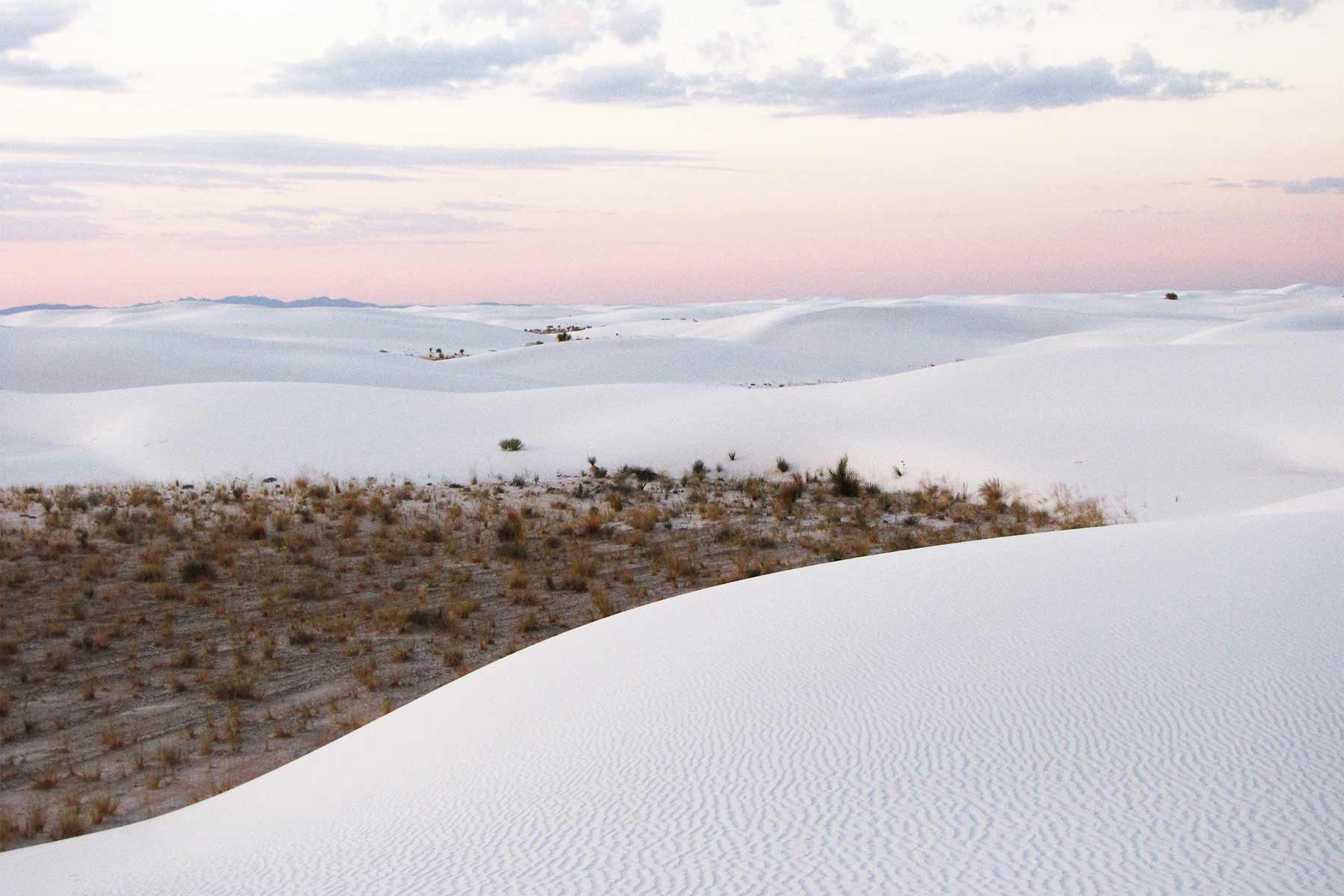
19. Kasha-Katuwe Tent Rocks National Monument
If you’ve ever seen the epic photos of hot air balloons and dreamed of visiting Cappadocia, Turkey, New Mexico’s Kasha-Katuwe Tent Rocks National Monument is for you.
This beautiful national monument is a veritable geologist’s fantasyland complete with otherworldly “tent rocks” that appear to be from something from a NASA telescope.
According to the Bureau of Land Management, “the cone-shaped tent rock formations are the products of volcanic eruptions that occurred 6 to 7 million years ago and left pumice, ash, and tuff deposits over 1,000 feet thick.”
For folks interested in visiting this New Mexico national monument, I highly recommend the Cave Loop Trail with the Slot Canyon Trail add-on as the “must-see” spots in Kasha-Katuwe Tent Rocks National Monument. The monument is located less than an hour’s drive from Albuquerque making it an easy day trip.
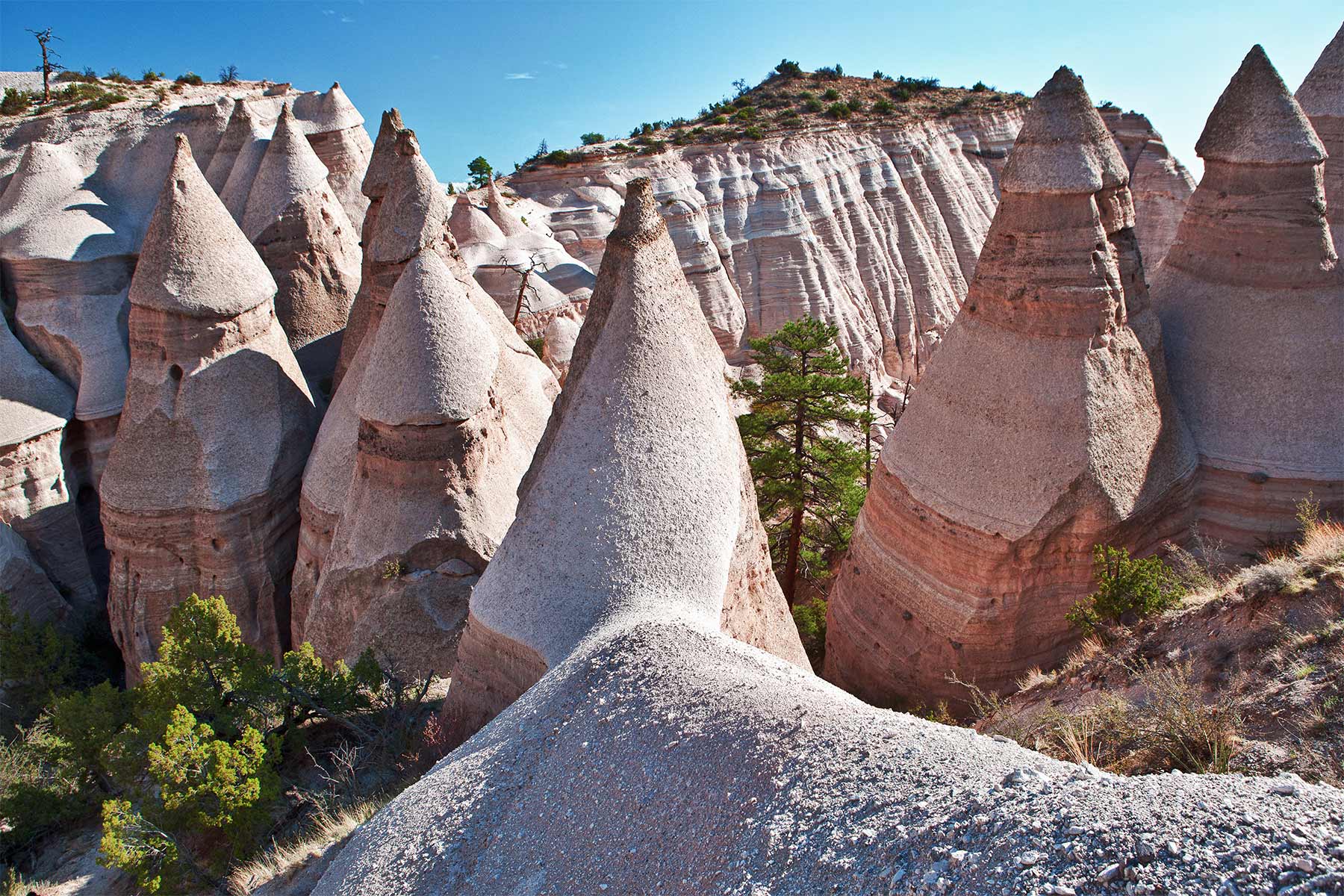
Check out our ranked list of All 128 US National Monuments to see where Kasha-Katuwe Tent Rocks lands.
20. Río Grande del Norte National Monument
As one of the newer national monuments in the U.S., Rio Grande Del Norte has a lot to offer both in terms of scenery and recreational opportunities.
For starters, the entire 242,000 acre monument is situated above 7,000 feet elevation with deep canyons and extensive volcanic features.
Recreational options at Rio Grande Del Norte National Monument are basically endless with hiking, camping, hunting, fishing, biking, whitewater rafting, horseback riding, wildlife viewing, and so much more. You could stay a week at Rio Del Norte and still not have seen it all.
For folks visiting Rio Grande Del Norte National Monument I recommend checking out the stunning Taos Valley Overlook, hiking the Rio Grande Gorge West Rim Trail, and exploring the John Dunn Bridge Recreation Site. The monument is located just outside the adventurous New Mexico mountain town of Taos and two hours from Santa Fe.
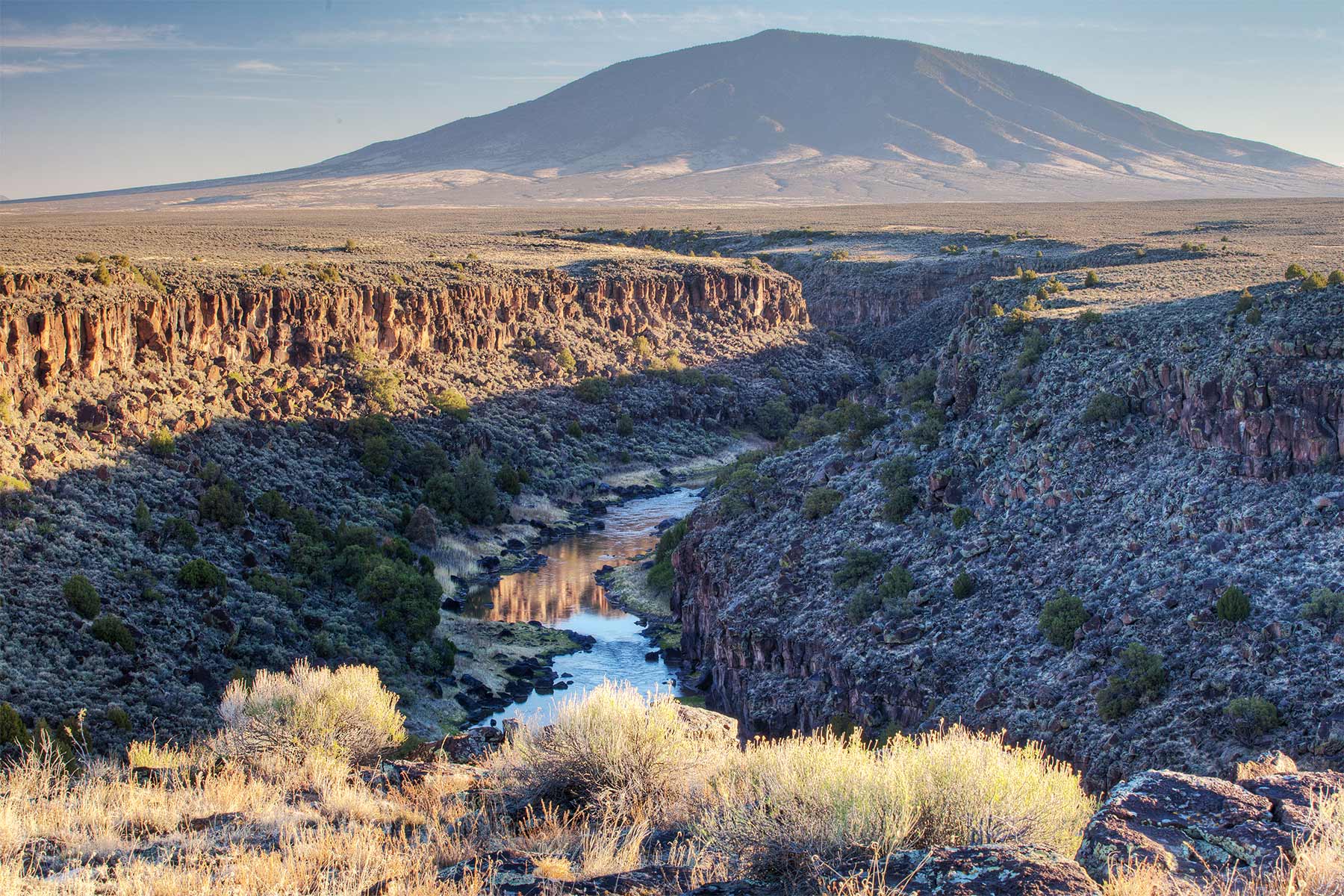
Check Out Our Saguaro National Park Film
SAGUARO is the culmination of weeks spent filming in one of the most unique and vibrant deserts in the world, the Sonoran Desert.
Encompassing over 90,000 acres, Saguaro National Park preserves vast forests of the iconic saguaro cactus, rare wildlife, and majestic landscapes.
New Mexico National Parks FAQ
New Mexico is known for its stunning landscapes and diverse array of attractions. From its beautiful caves and blue corn pancakes to the first atomic bomb test site and famous chili peppers, there’s something for everyone in this unique state.
The following is a list of must-see historic sites in New Mexico:
Gila Cliff Dwellings National Monument
Manhattan Project National Historical Park
Santa Fe National Historic Trail
Bandelier National Monument
Chaco Culture National Historical Park
Salinas Pueblo Missions National Monument
Fort Union National Monument
Petroglyph National Monument
El Morro National Monument
Capulin Volcano National Monument
Palace of the Governors
Acoma Pueblo
El Santuario de Chimayó
Mesilla Plaza and Historic District
Fort Bayard Historic District
Why Trust Us About New Mexico National Parks?
We’re Jim Pattiz and Will Pattiz, collectively known as the Pattiz Brothers (and sometimes the Parks Brothers) and we absolutely LOVE the national parks.
You should probably know that we don’t just make this stuff up out of thin air. We’ve spent our entire adult lives exploring and filming America’s national parks and public lands.
We’ve worked with the National Park Service, the Department of Interior, USDA, and the U.S. Forest Service for years creating films on important places and issues. Our work has been featured in leading publications all over the world and even some people outside of our immediate family call us experts on the national parks.
Meet The Parks Brothers
Map Of New Mexico National Park Sites
List of Of New Mexico National Park Sites (Summary)
- Aztec Ruins National Monument
- Bandelier National Monument
- Capulin Volcano National Monument
- Carlsbad Caverns National Park
- Chaco Culture National Historical Park
- El Camino Real de Tierra Adentro National Historic Trail
- El Morro National Monument
- Fort Union National Monument
- El Malpais National Monument
- Gila Cliff Dwellings National Monument
- Manhattan Project National Historical Park
- Old Spanish National Historic Trail
- Pecos National Historic Park
- Petroglyph National Monument
- Salinas Pueblo Missions National Monument
- Santa Fe National Historic Trail
- Valles Caldera National Preserve
- White Sands National Park
- Kasha-Katuwe Tent Rocks National Monument
- Río Grande del Norte National Monument
We Hope You’ll Follow Our Journey
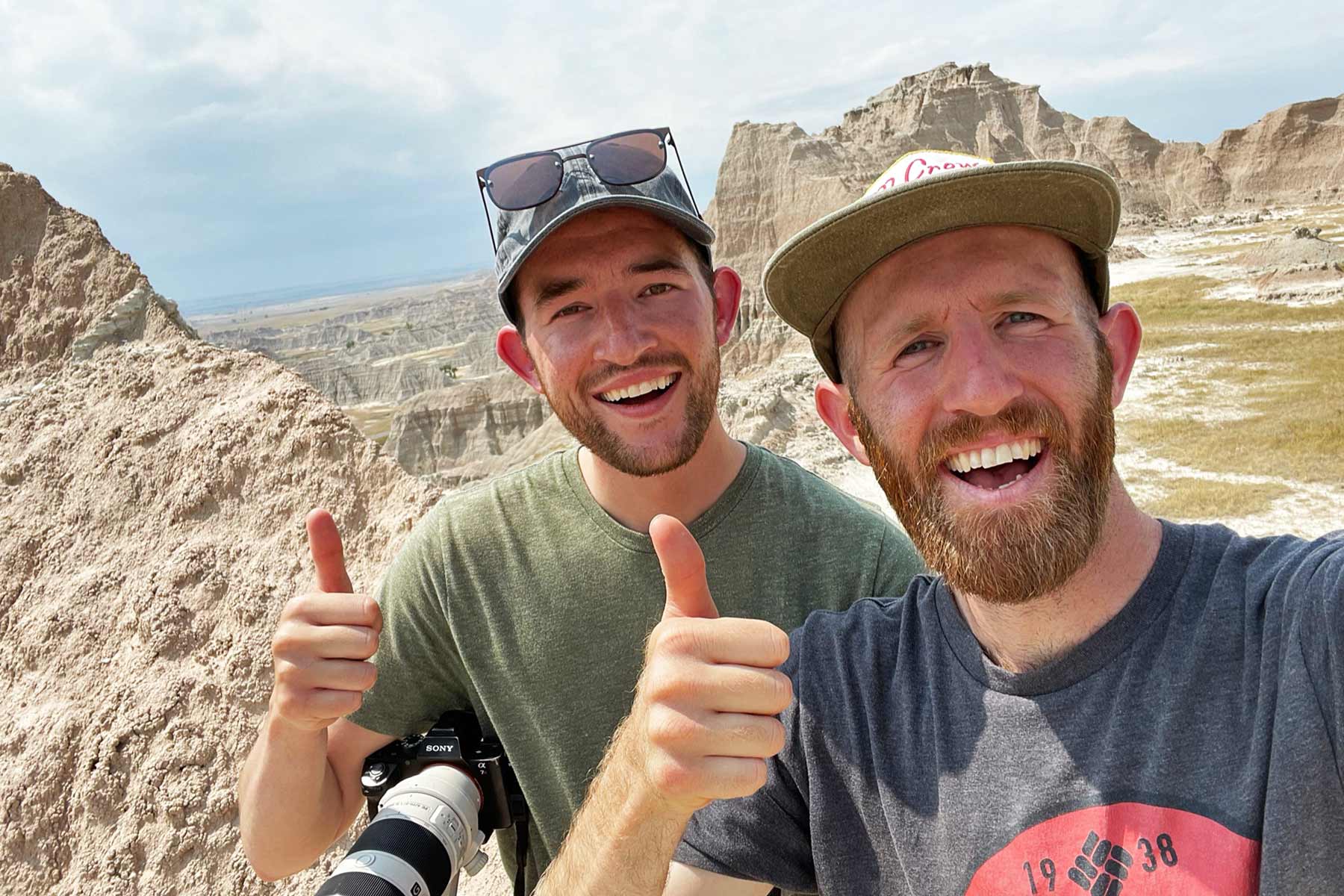
Our goal here at More Than Just Parks is to share the beauty of America’s national parks and public lands through stunning short films in an effort to get Americans and the world to see the true value in land conservation.
We hope you’ll follow our journey through the parks and help us to keep them the incredible places that they are. If you’re interested in joining the adventure then please sign up below!
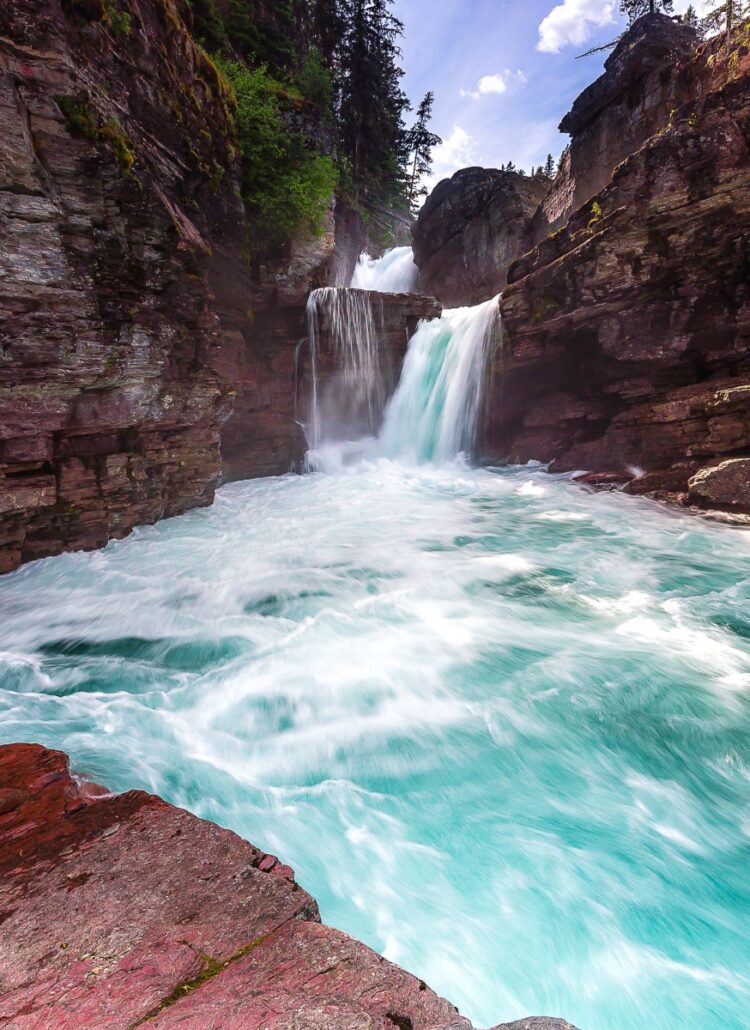
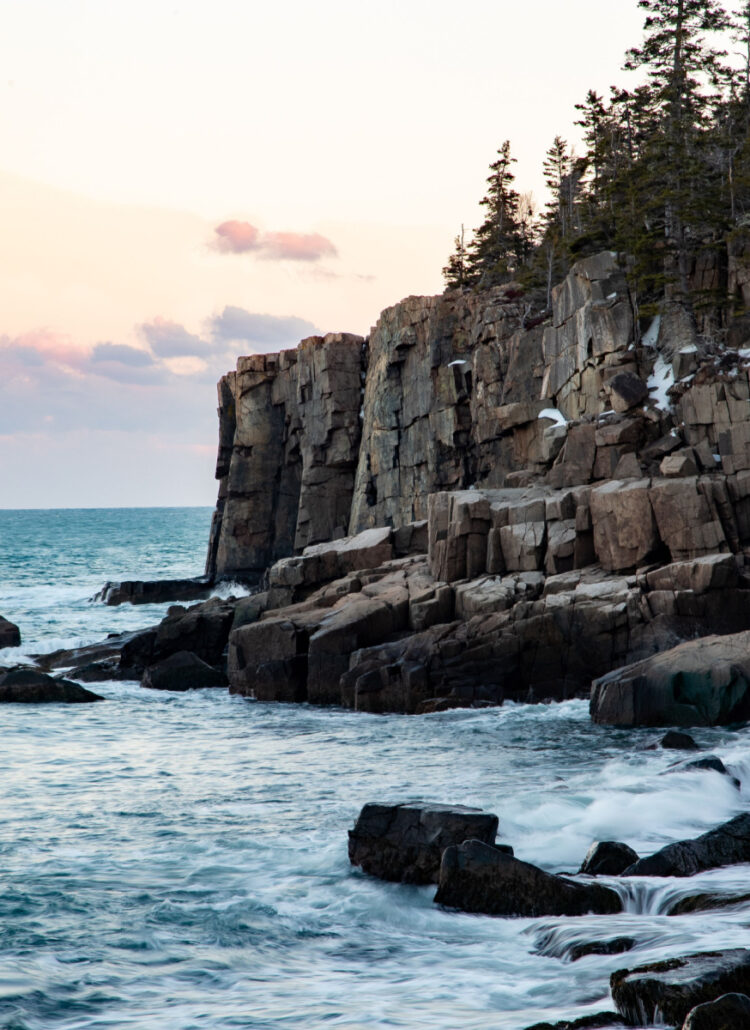
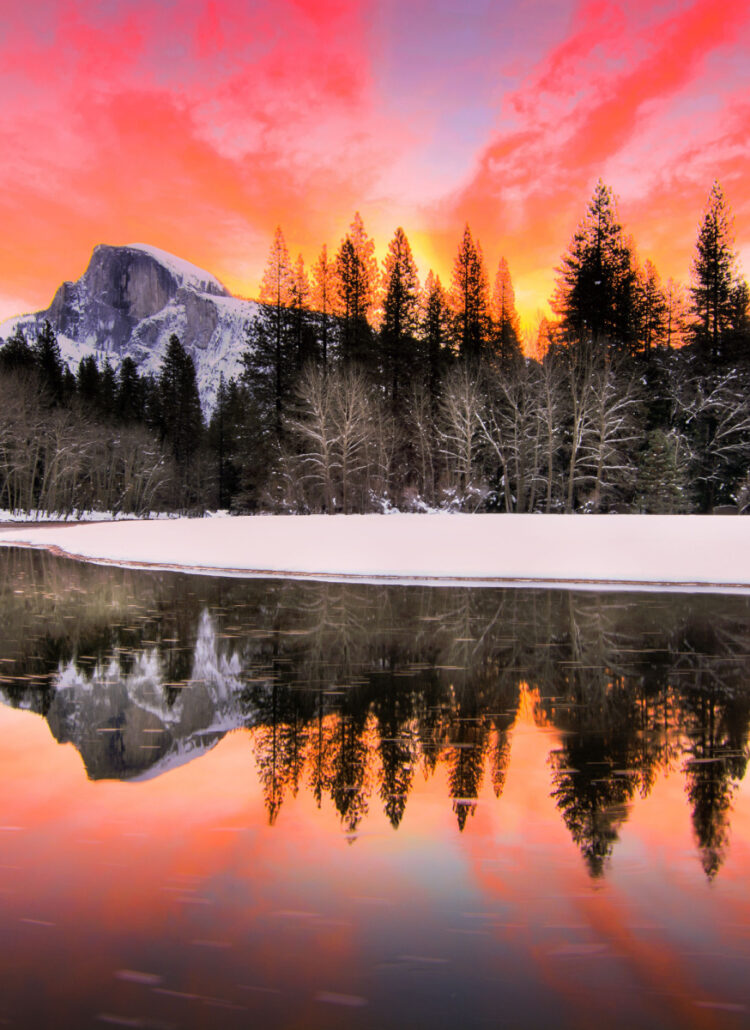
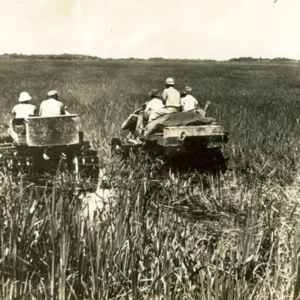
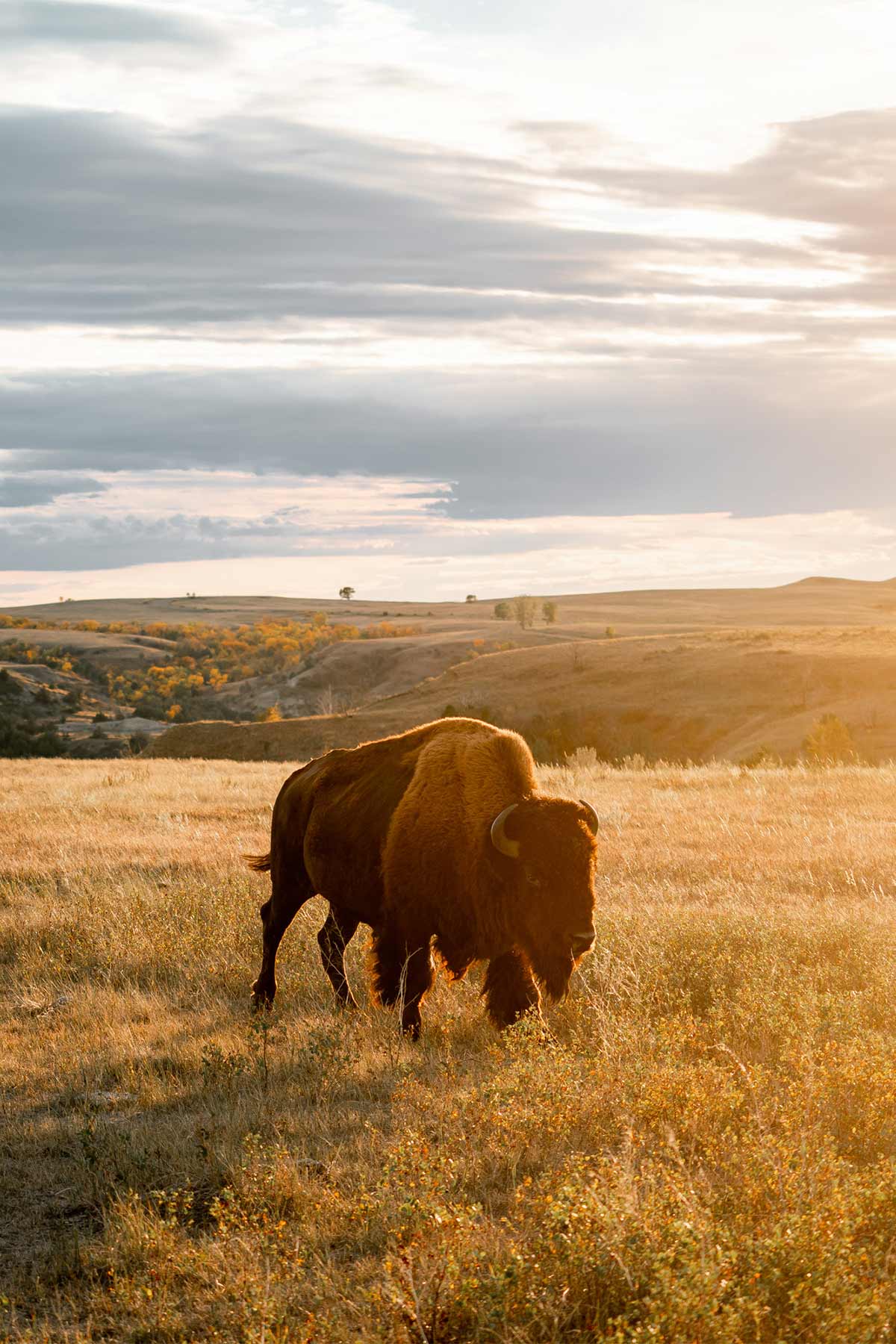
Leave a Reply